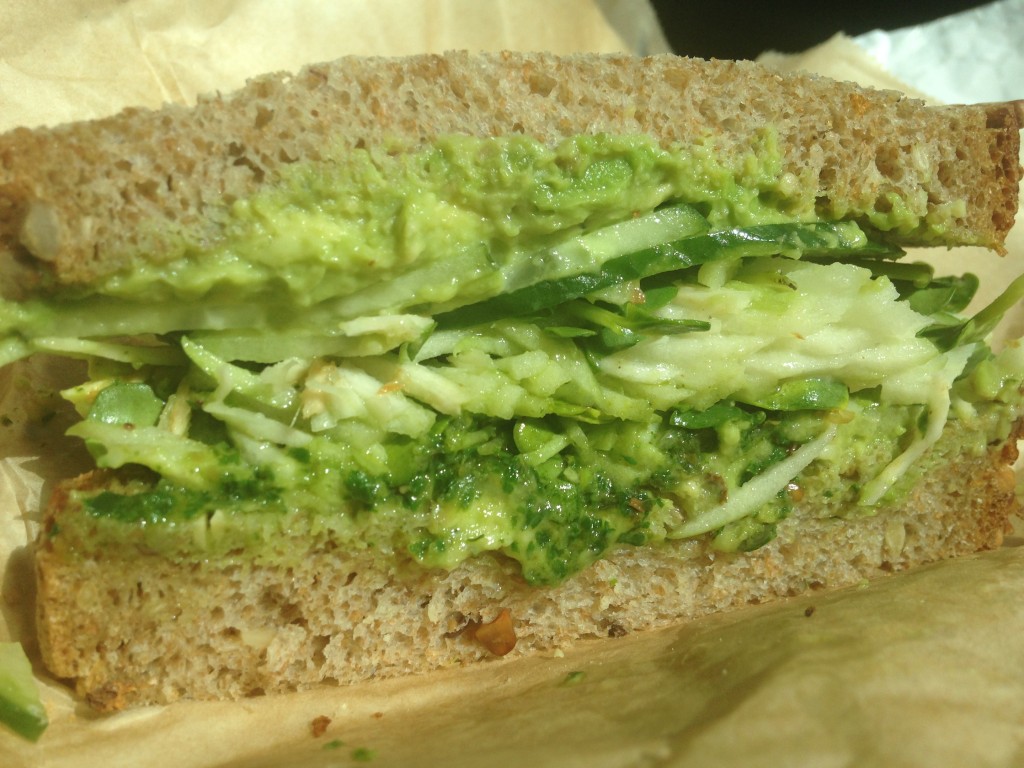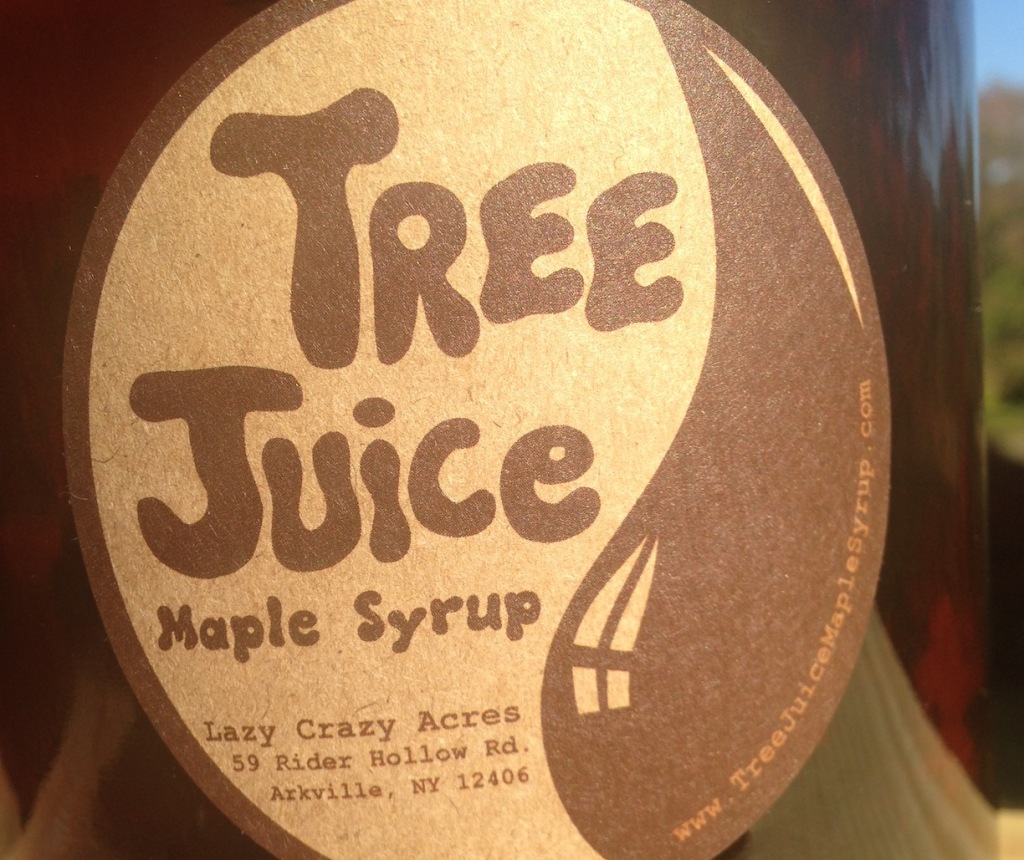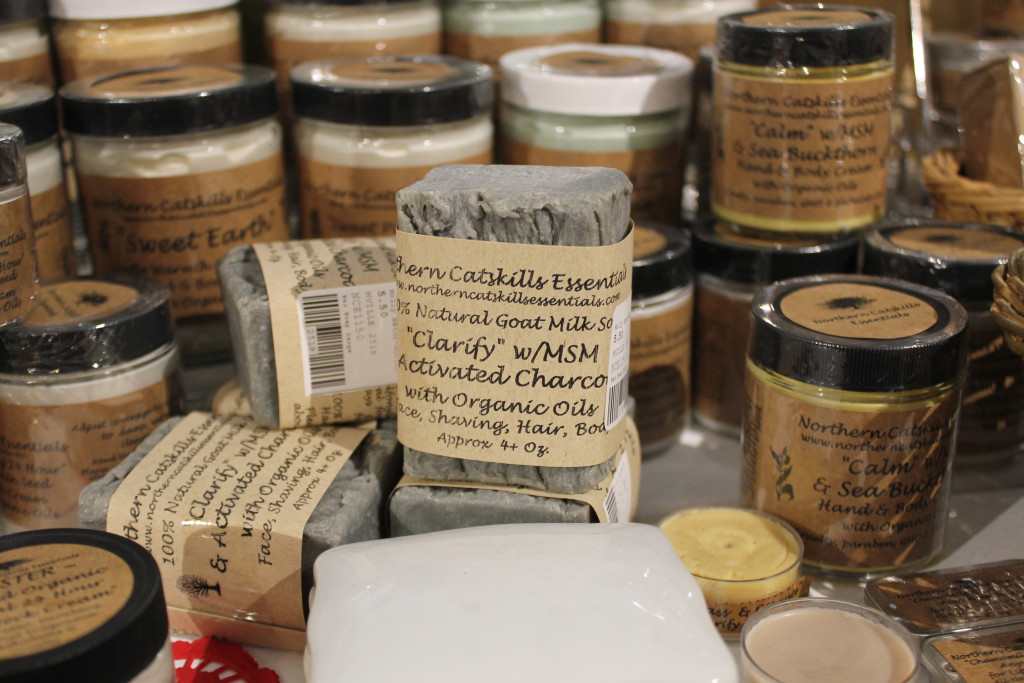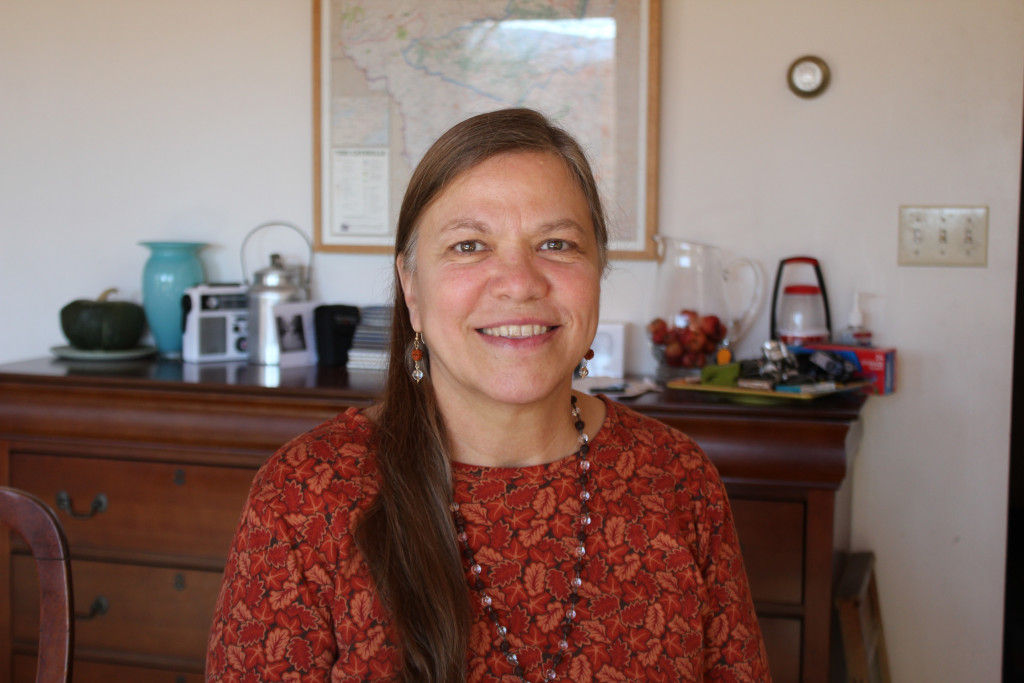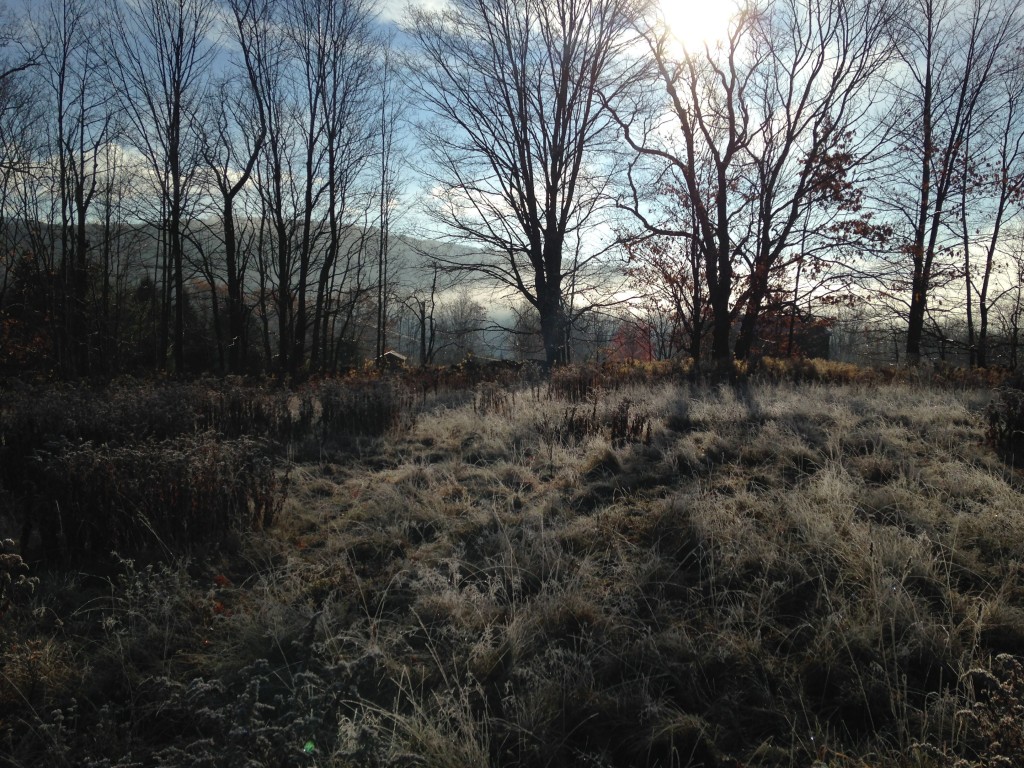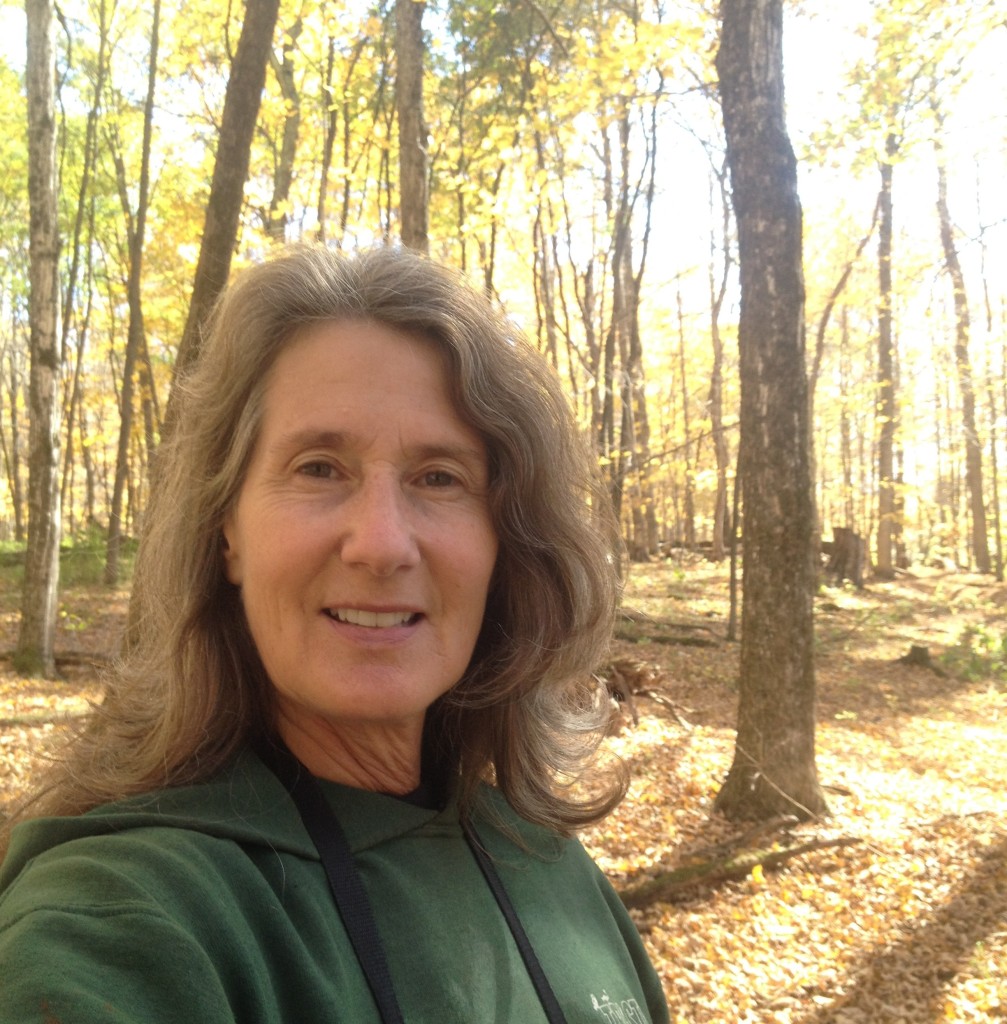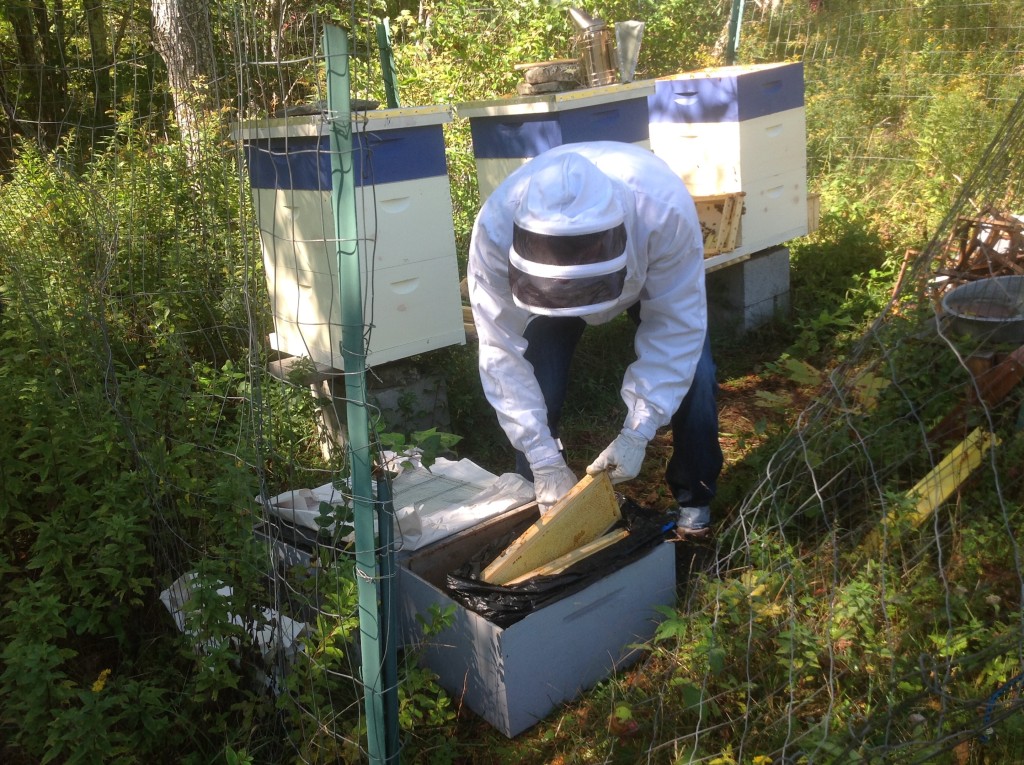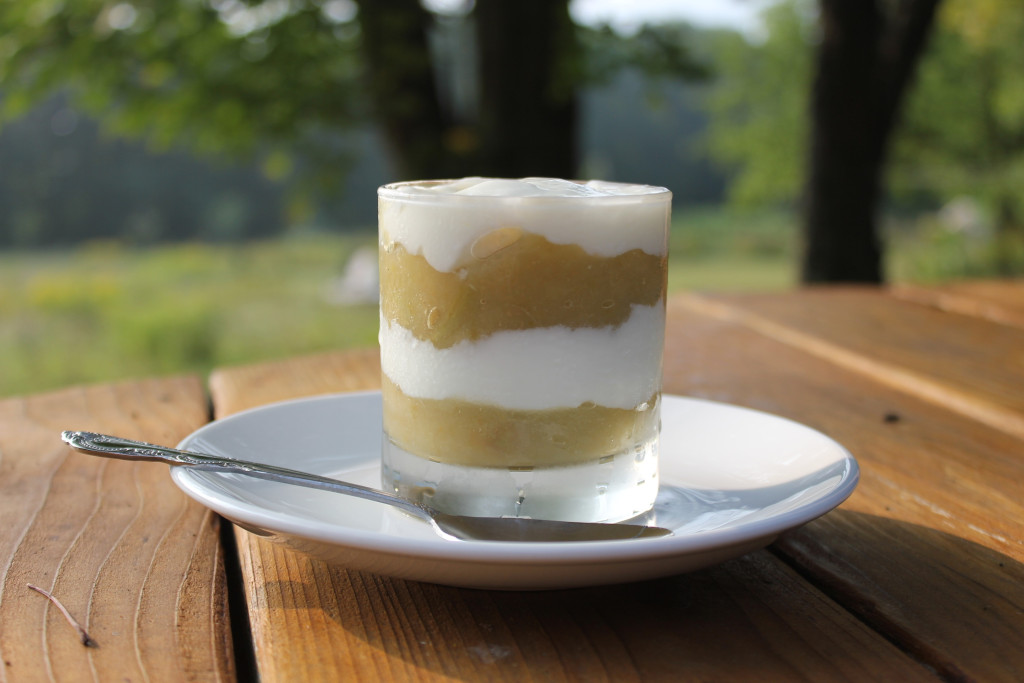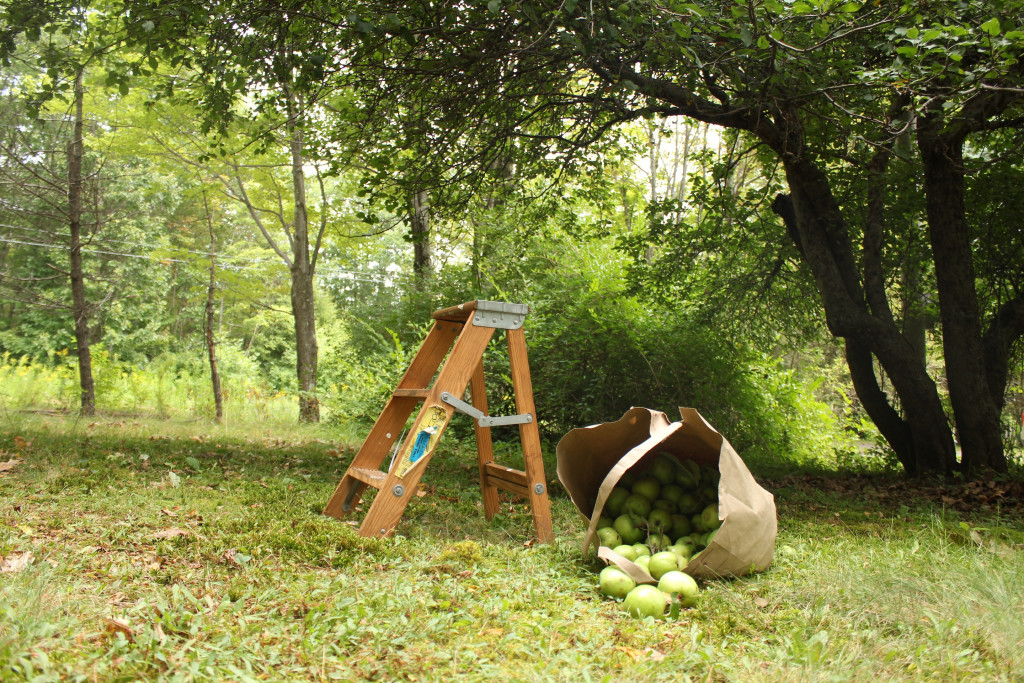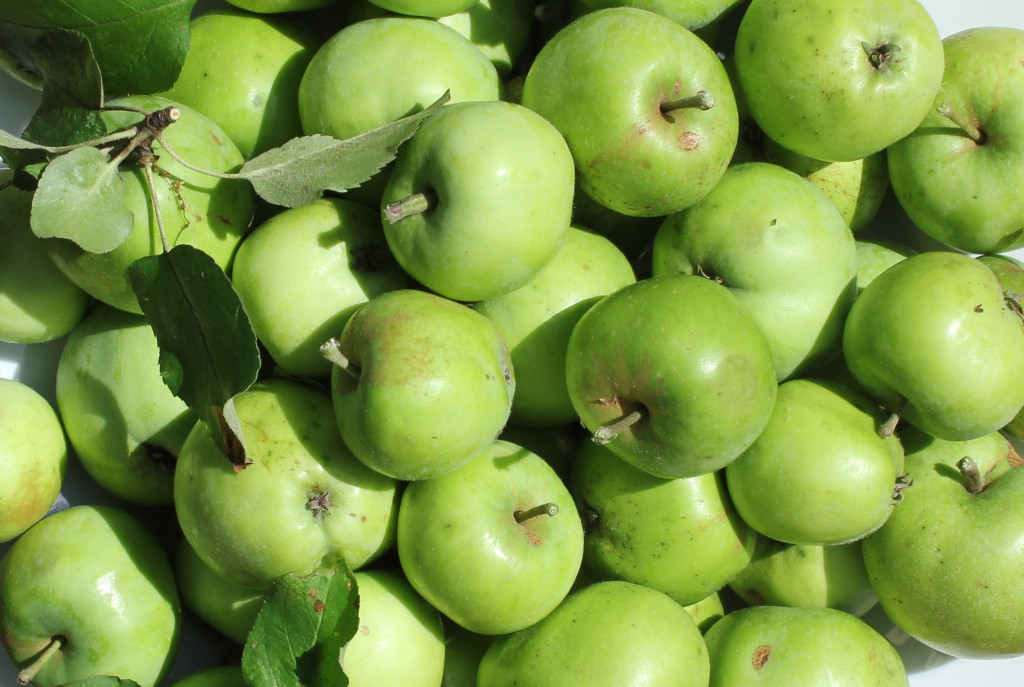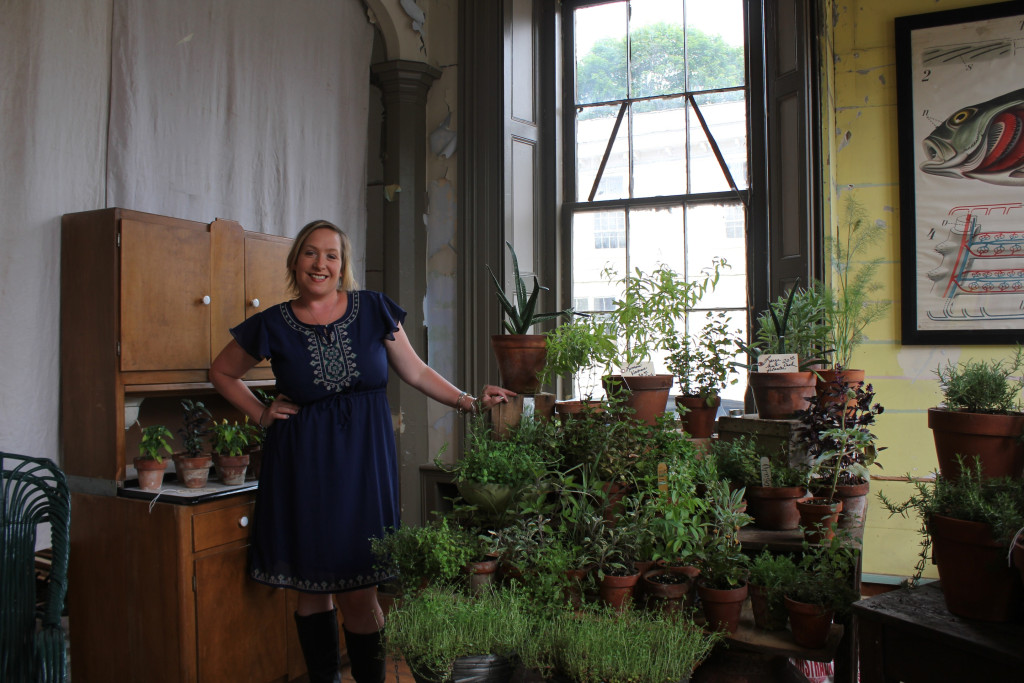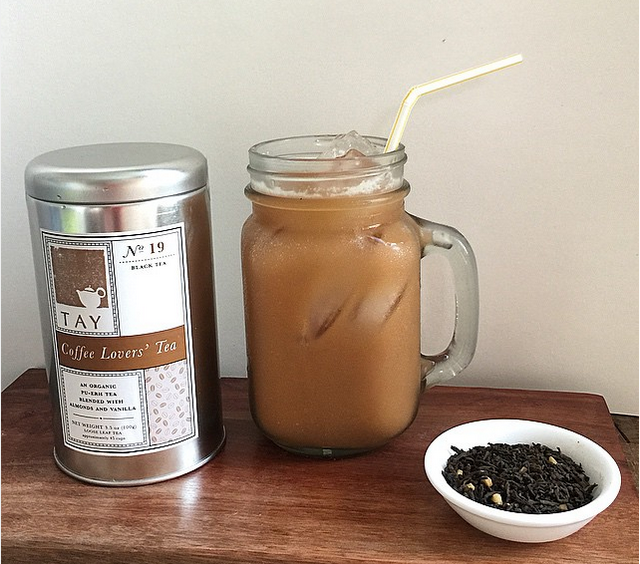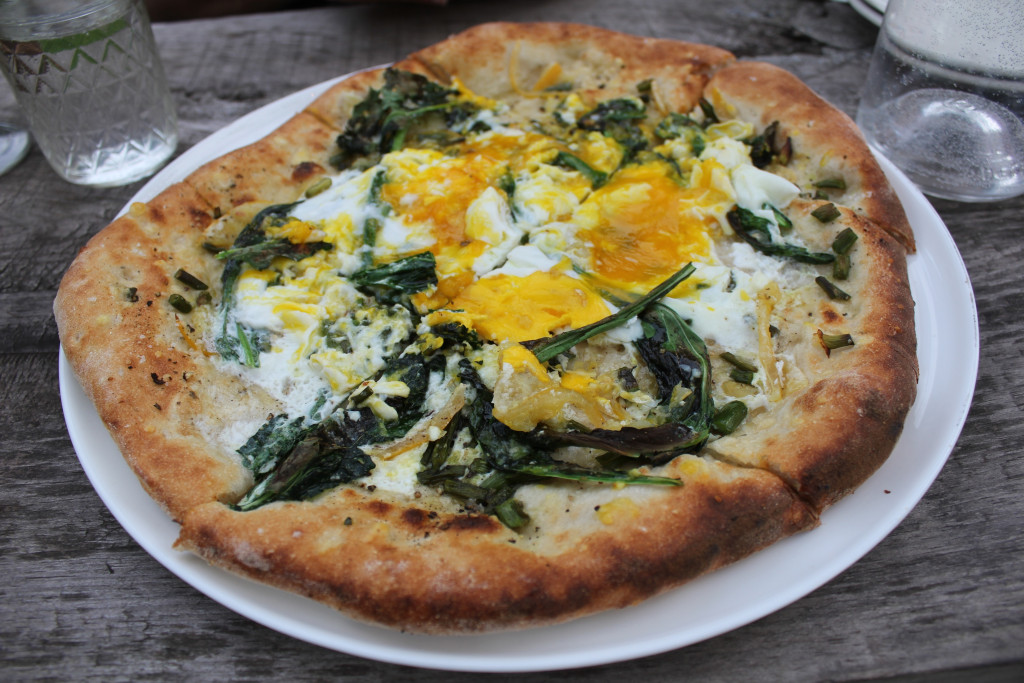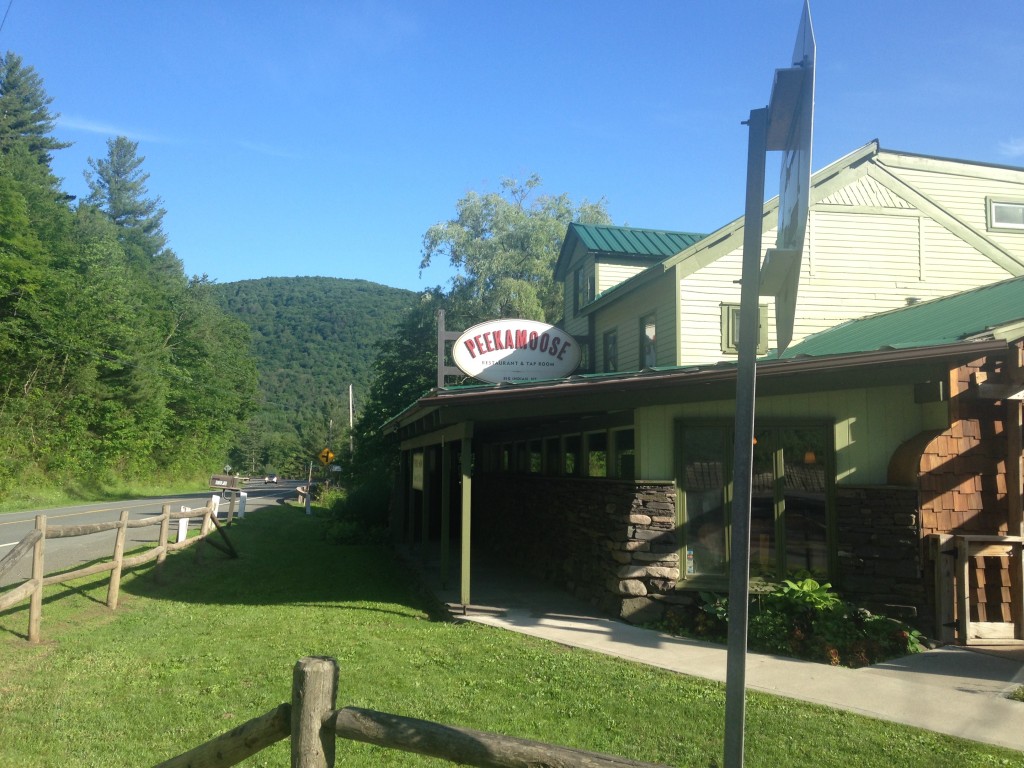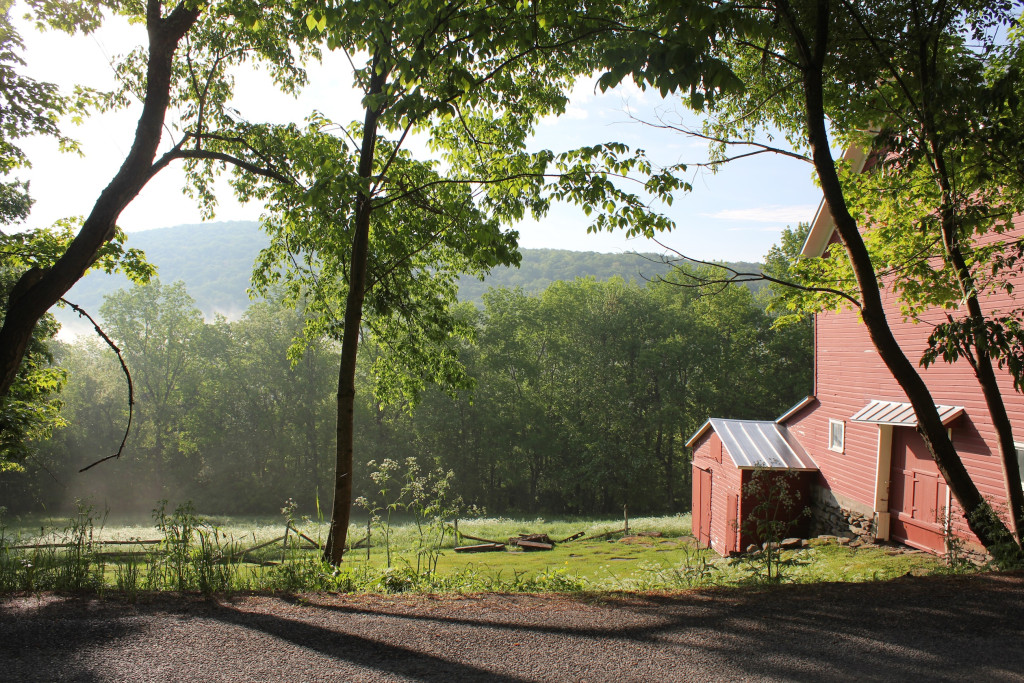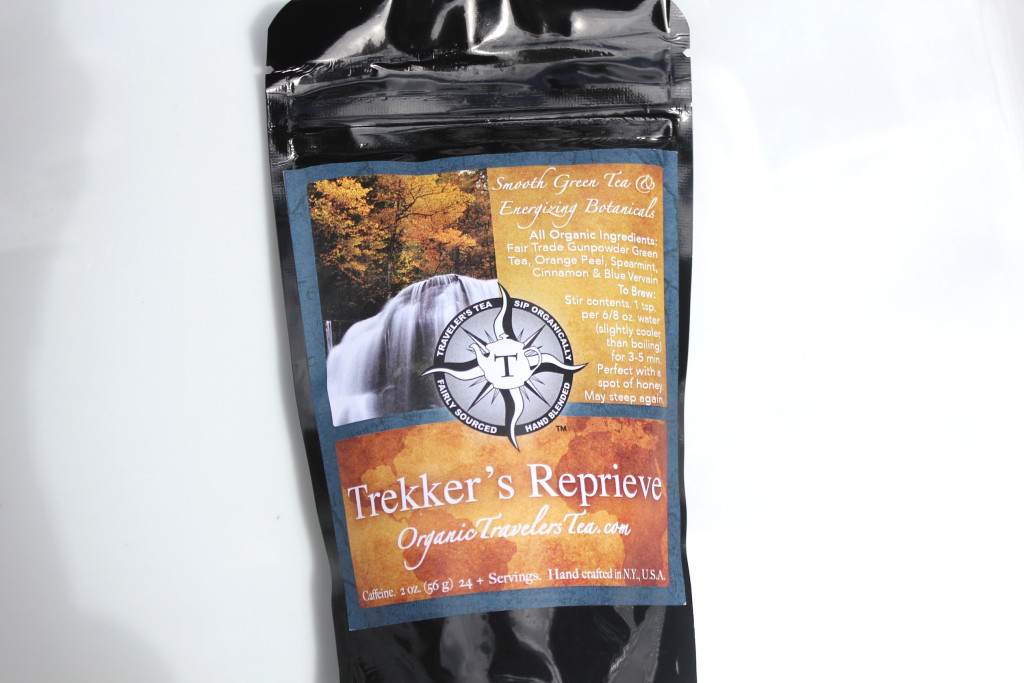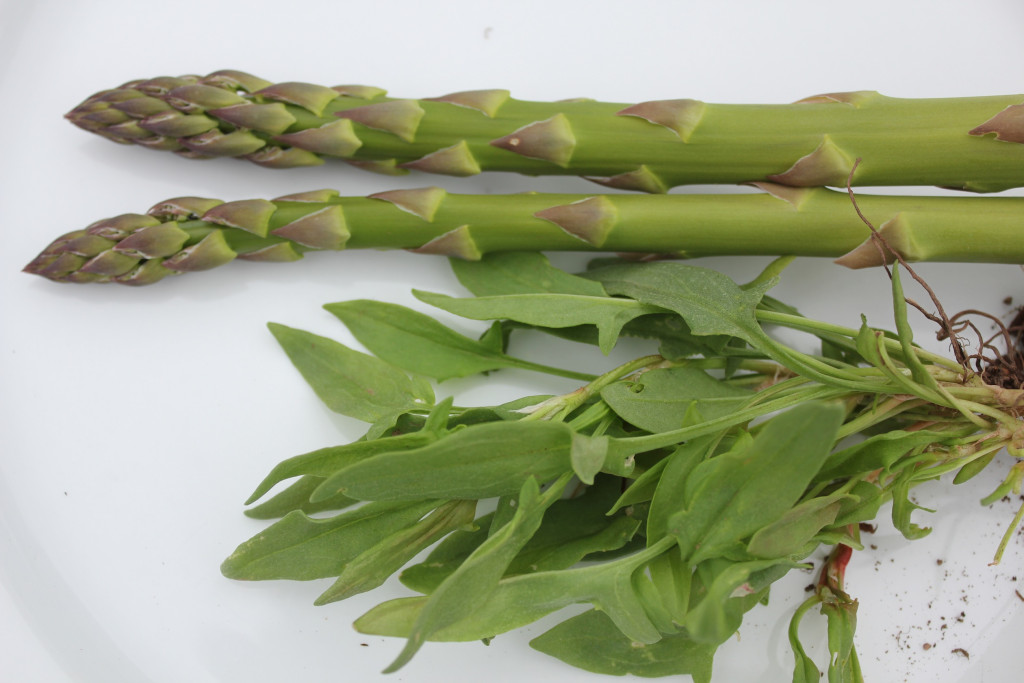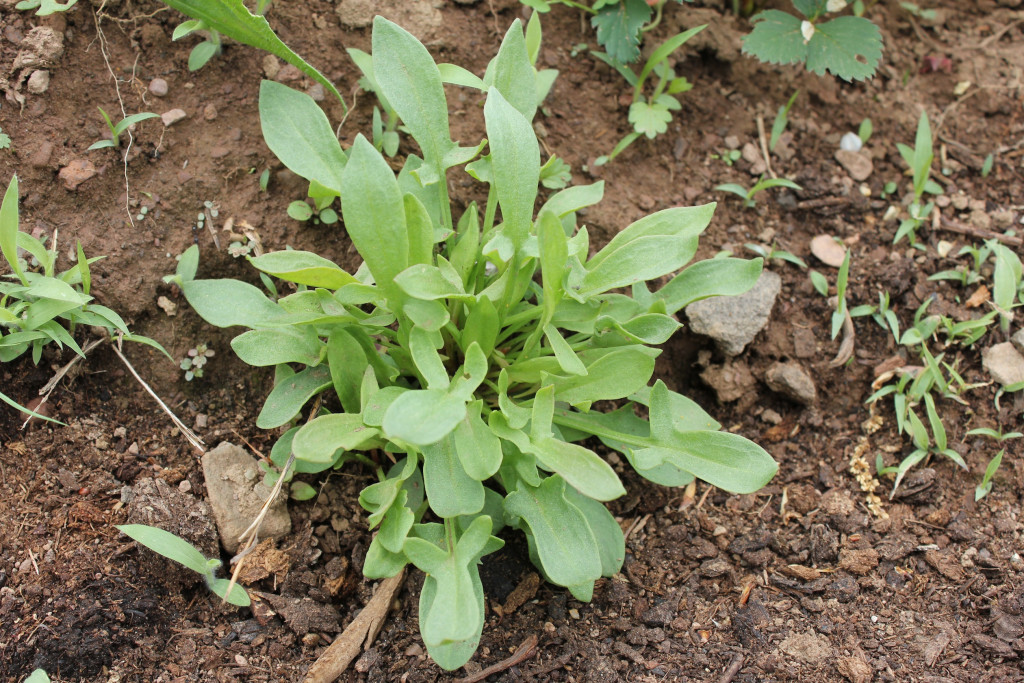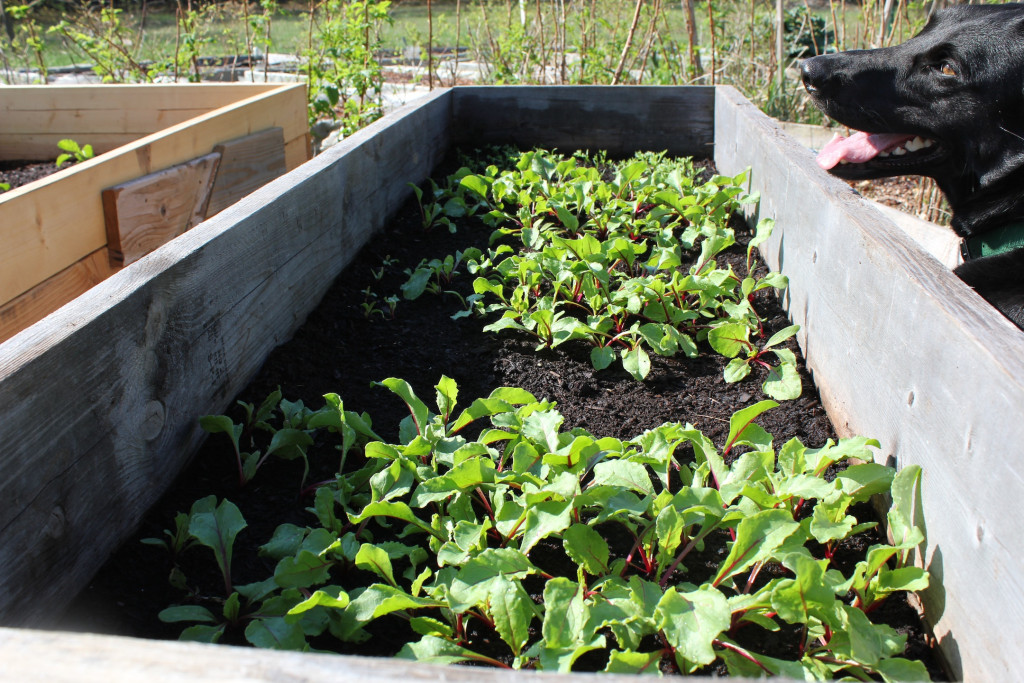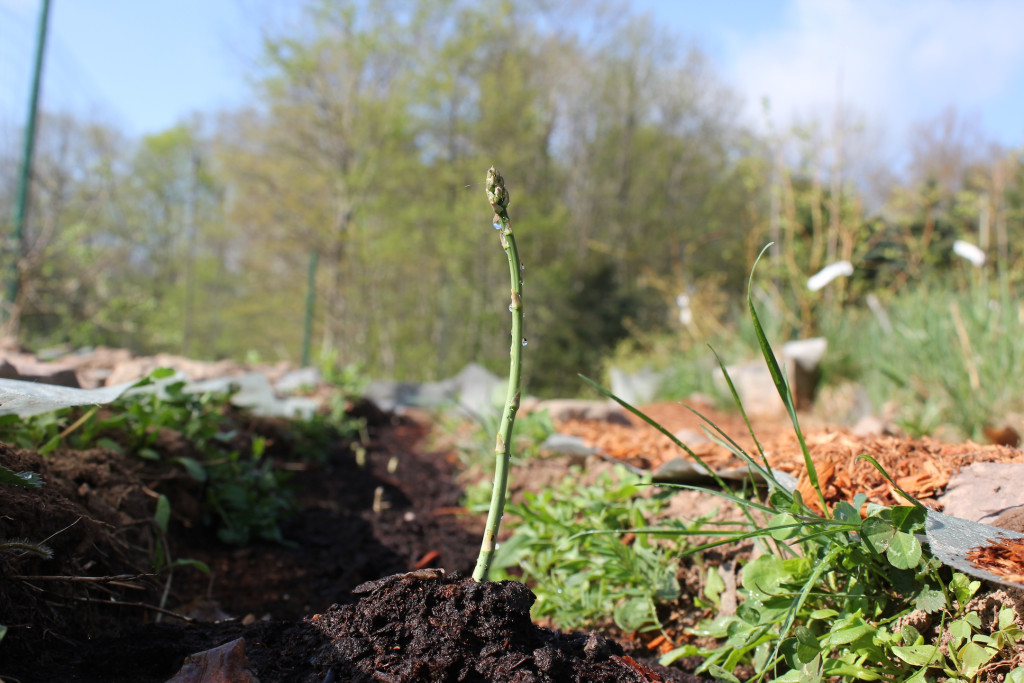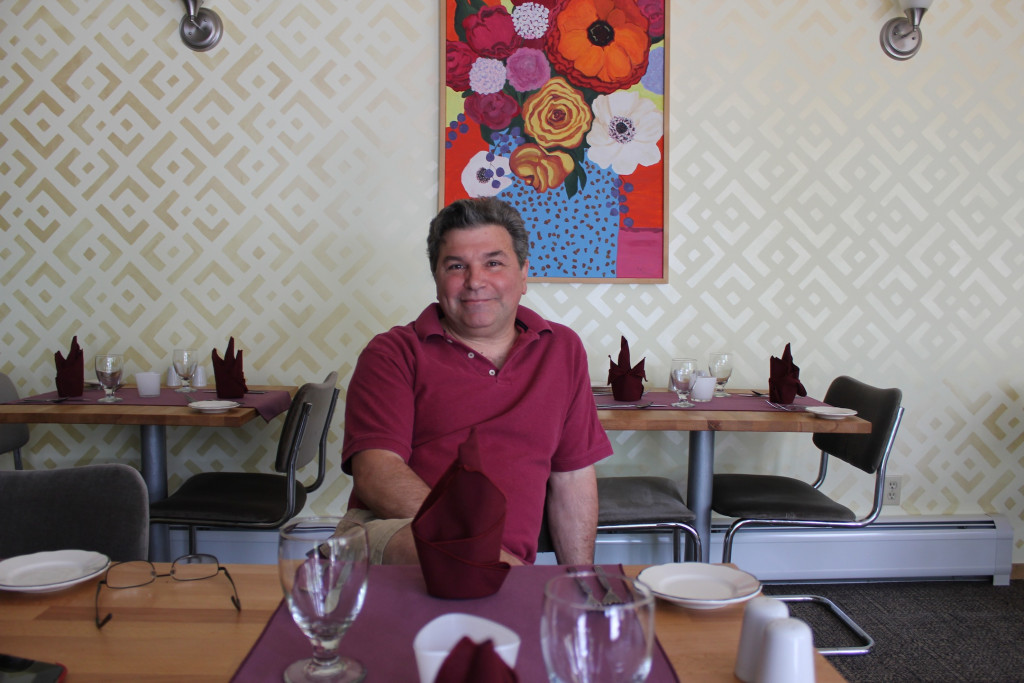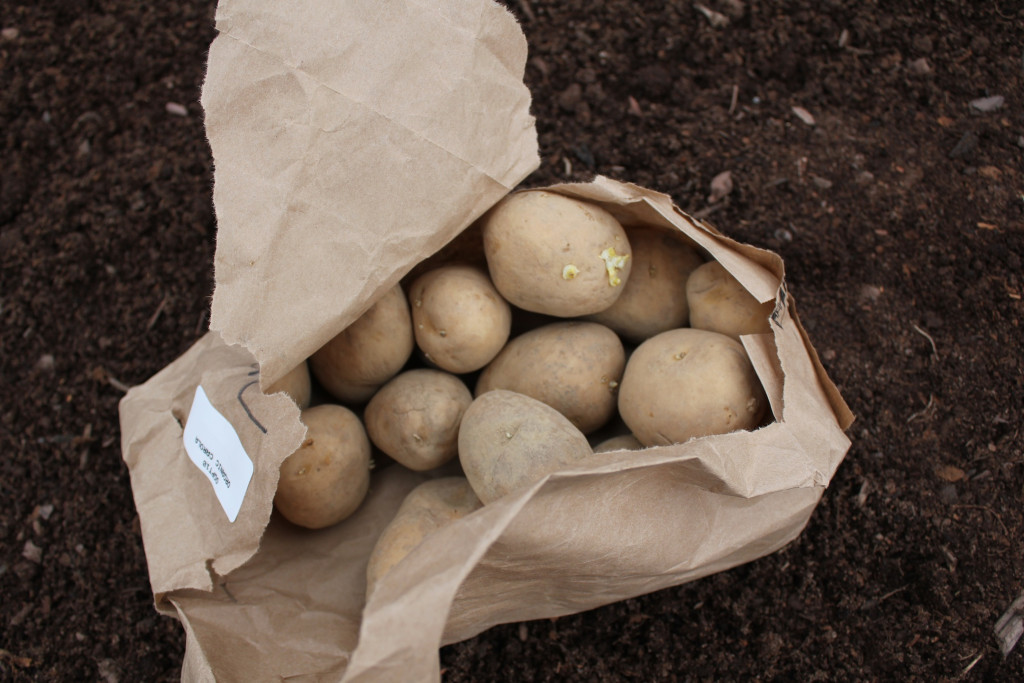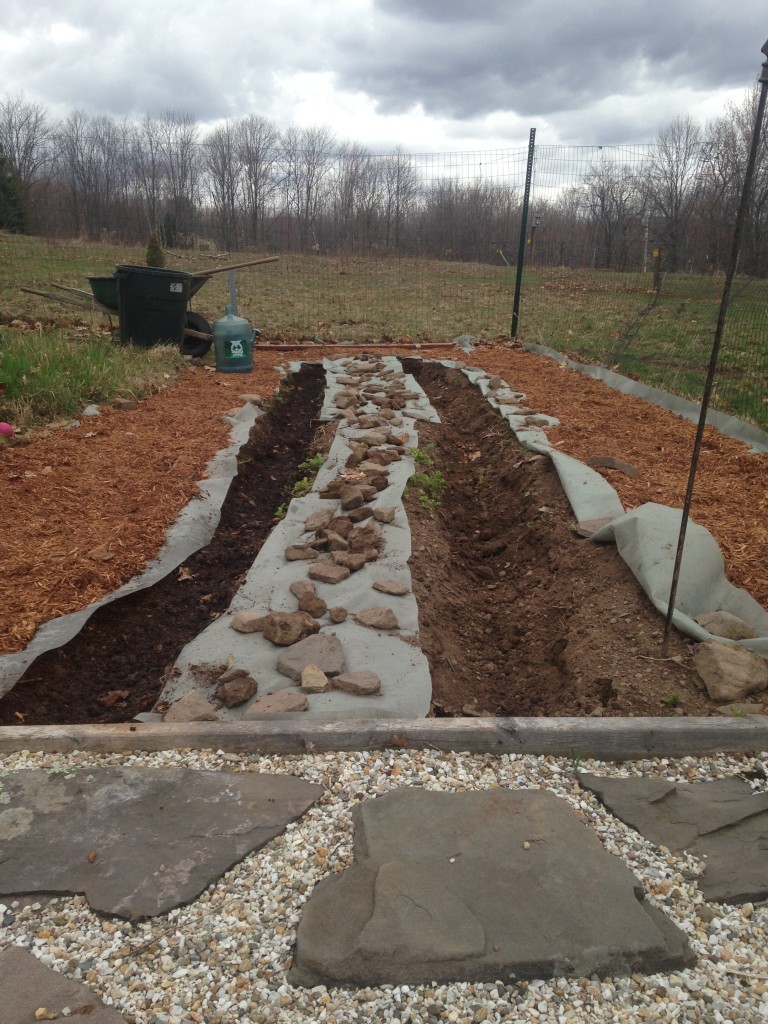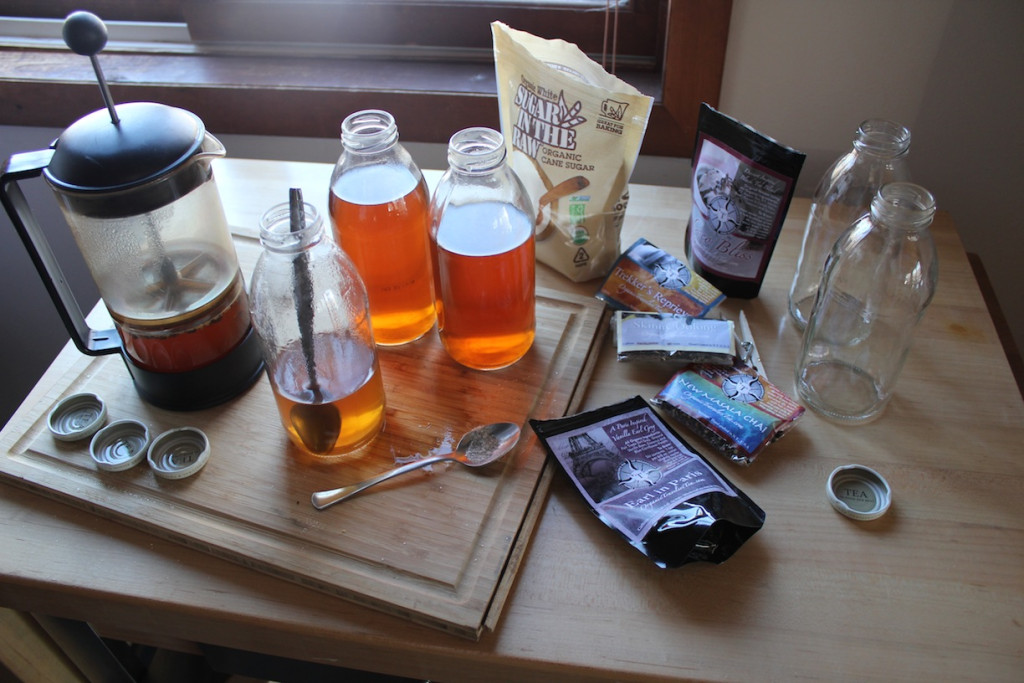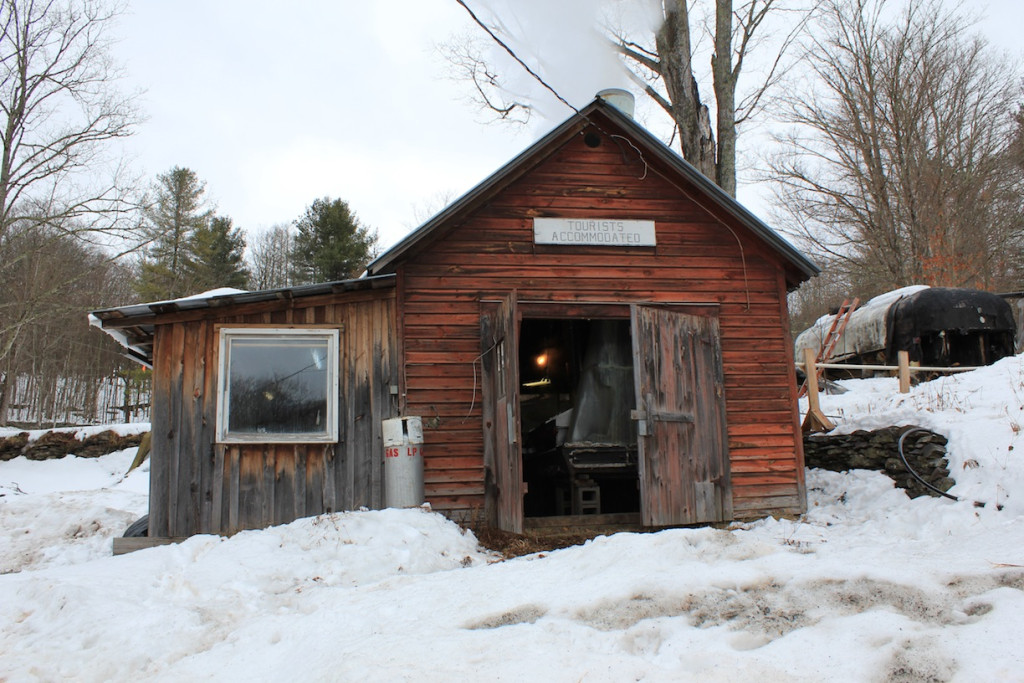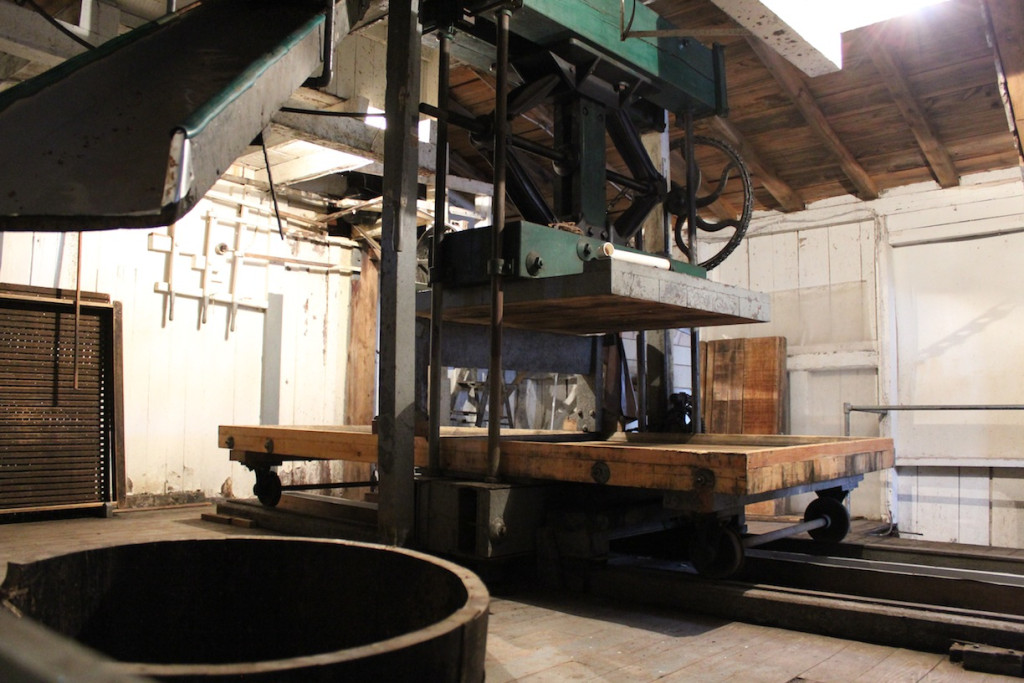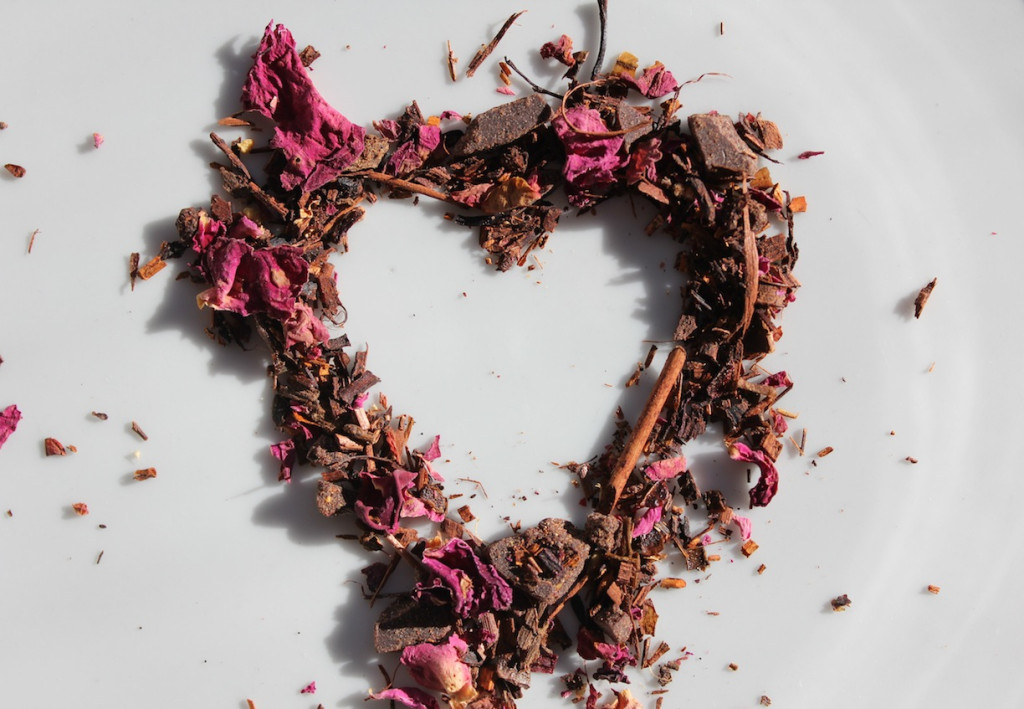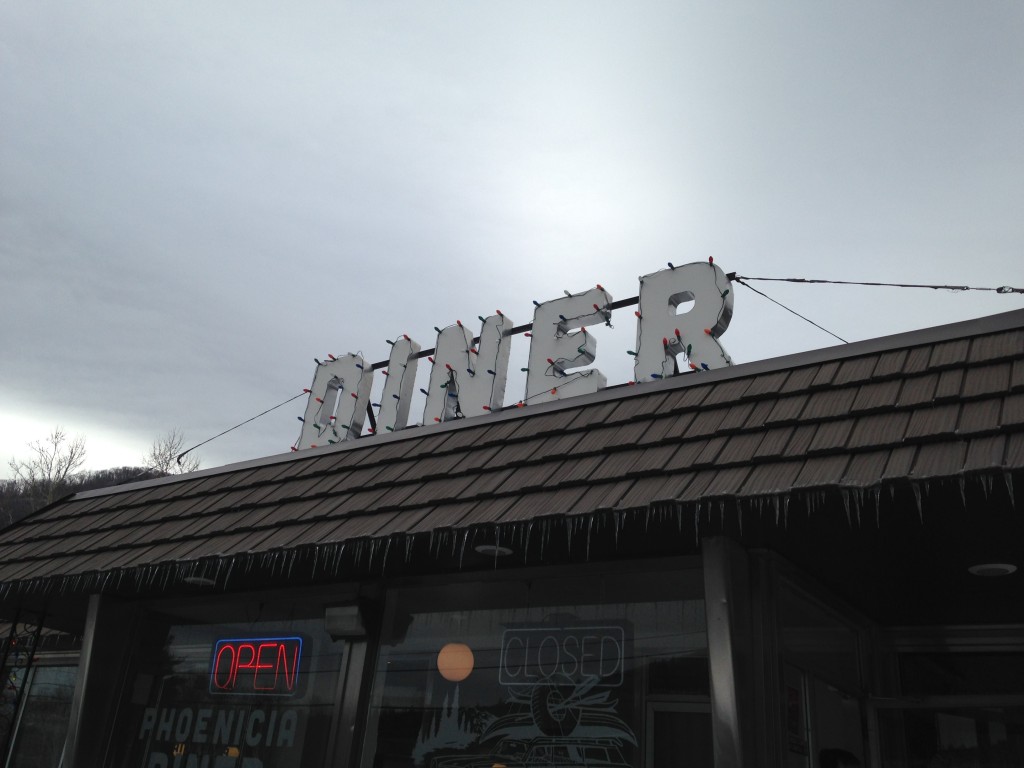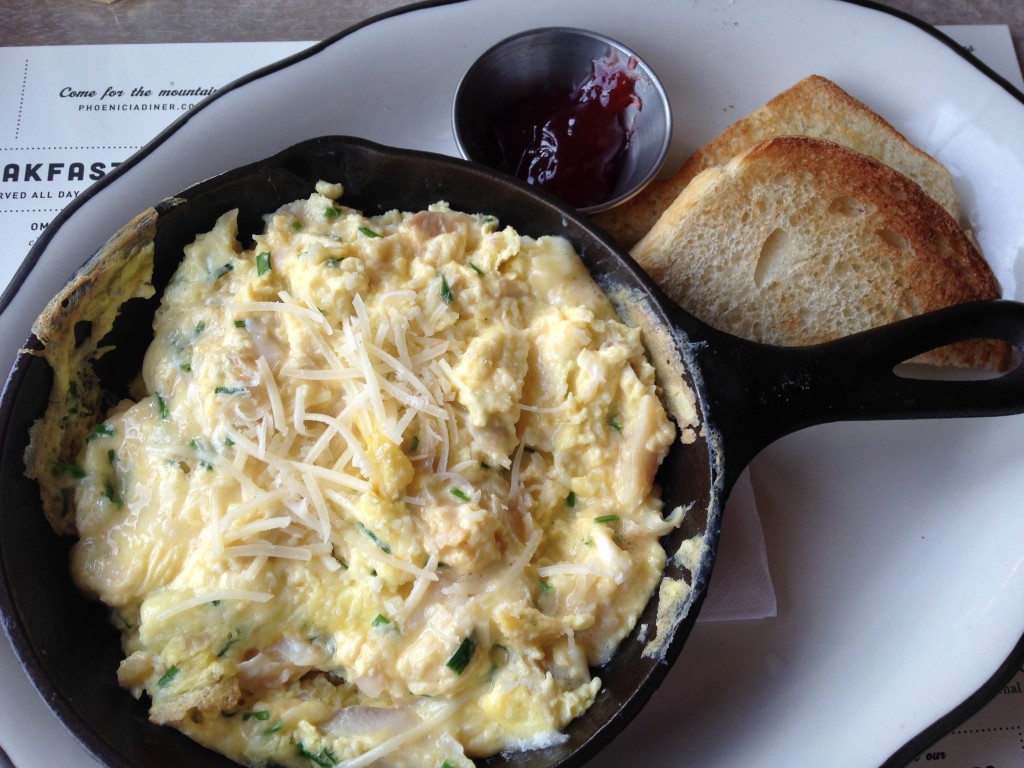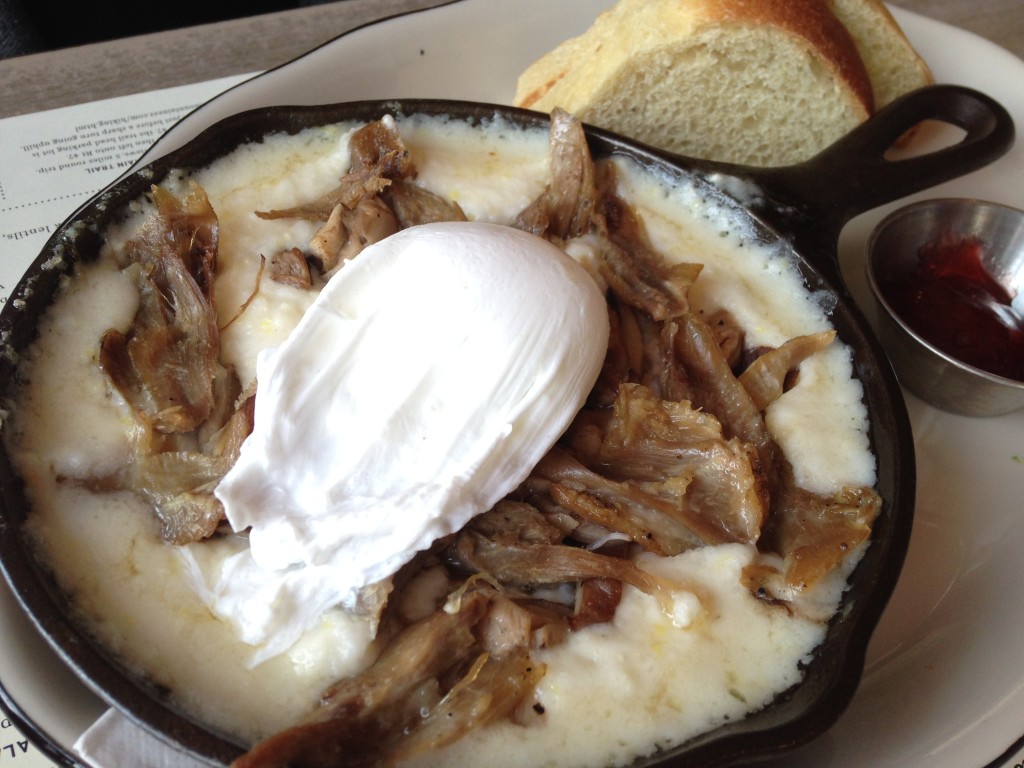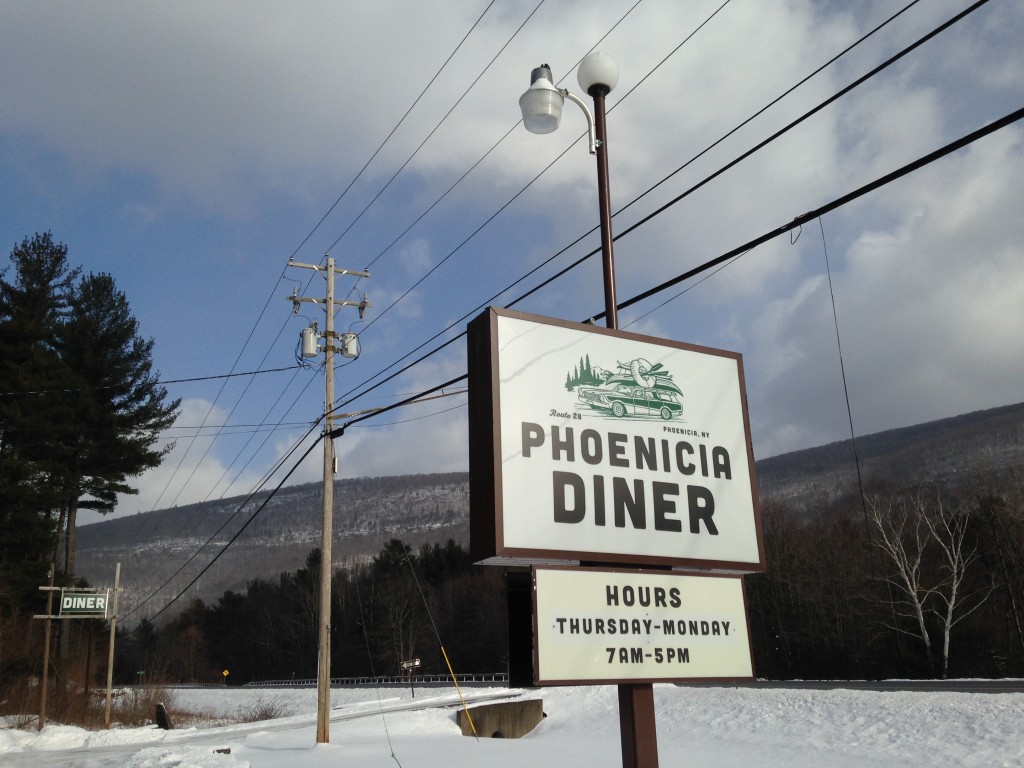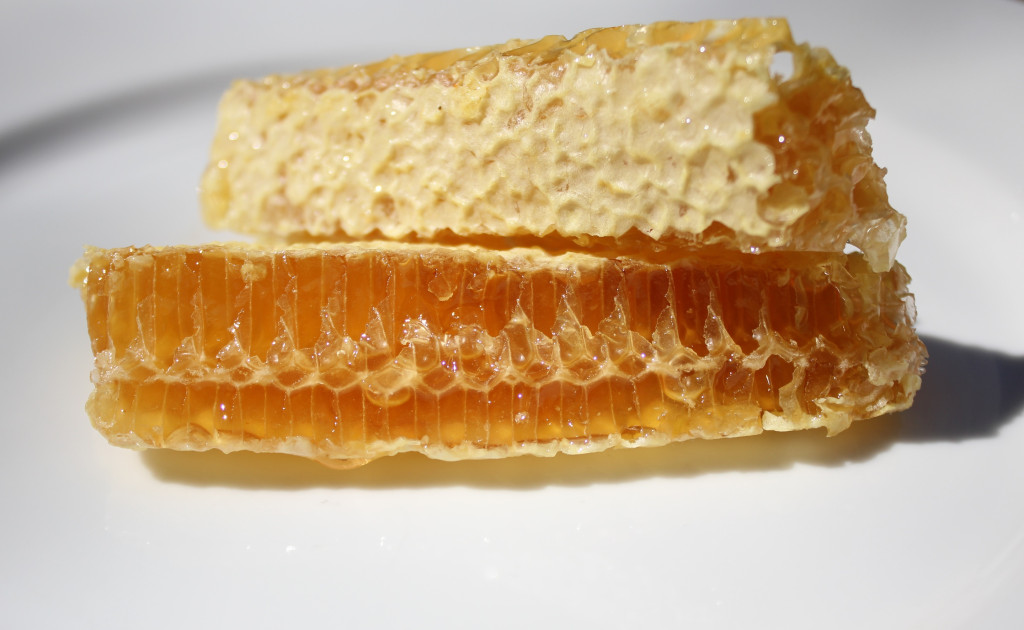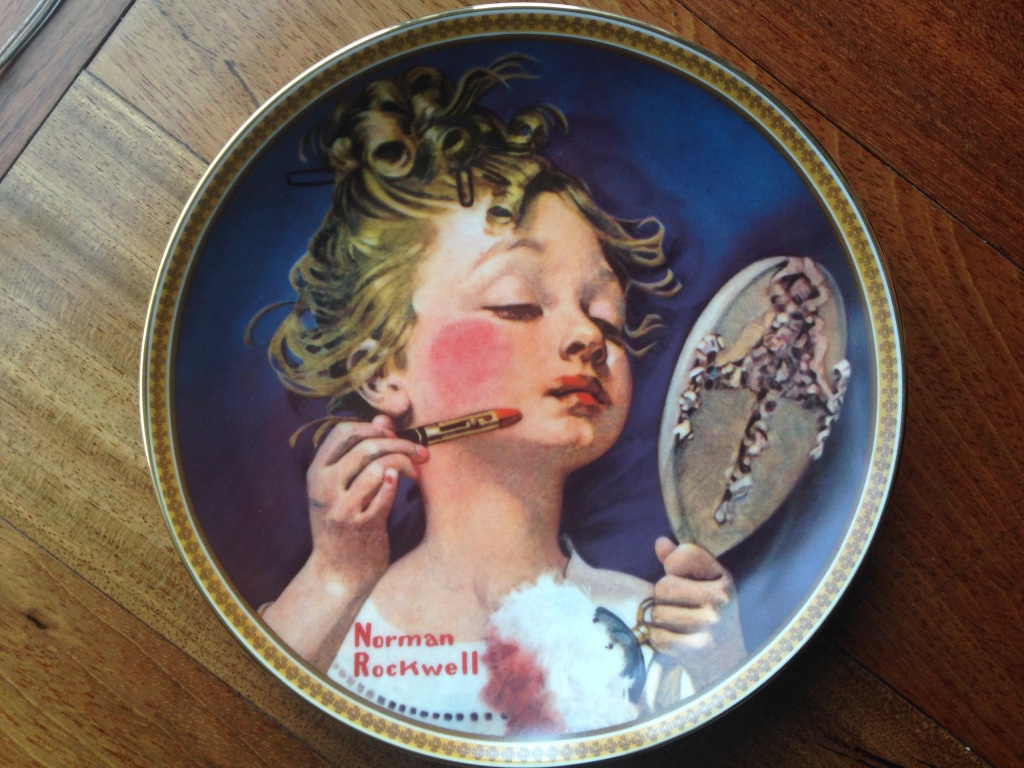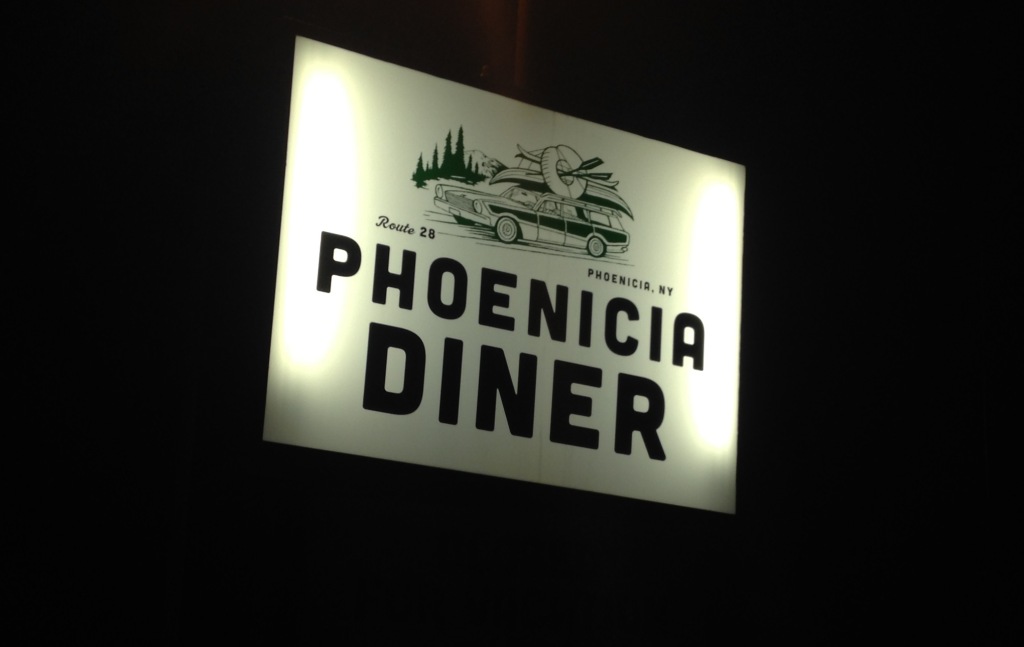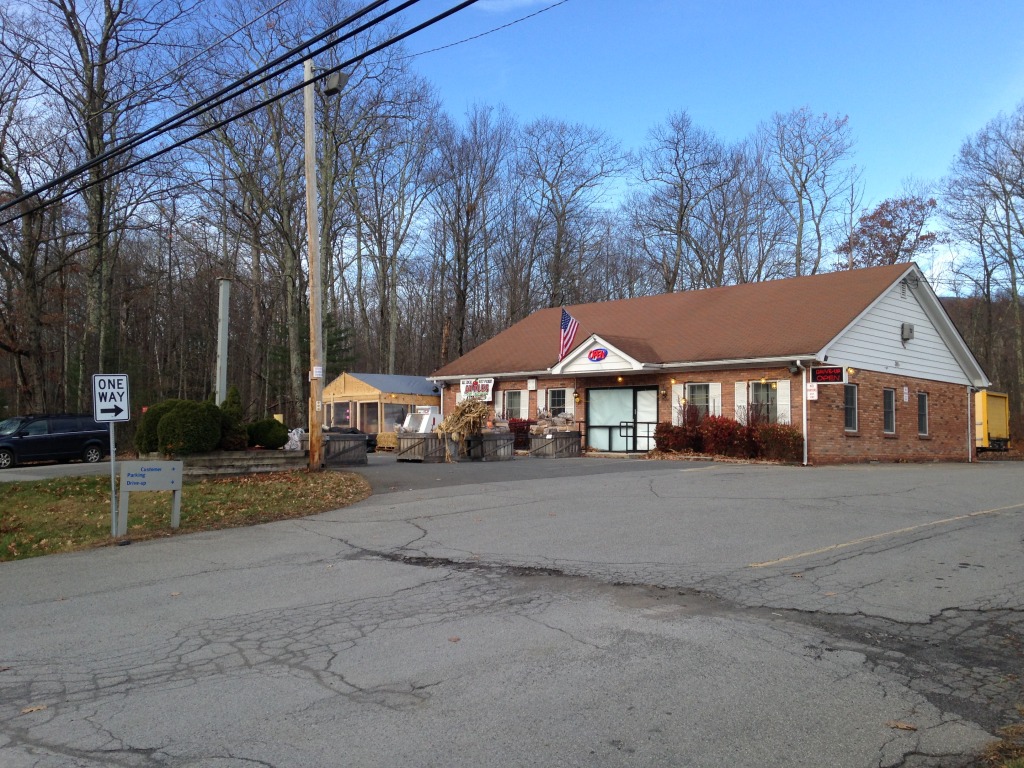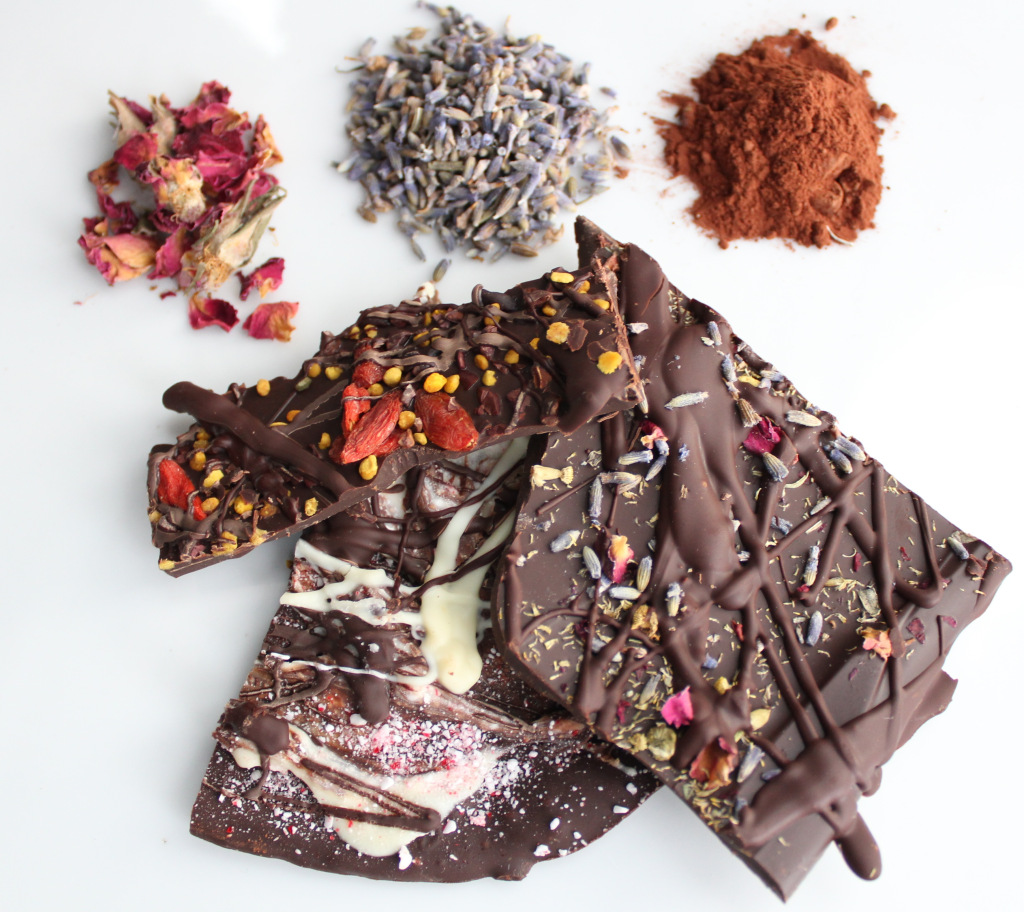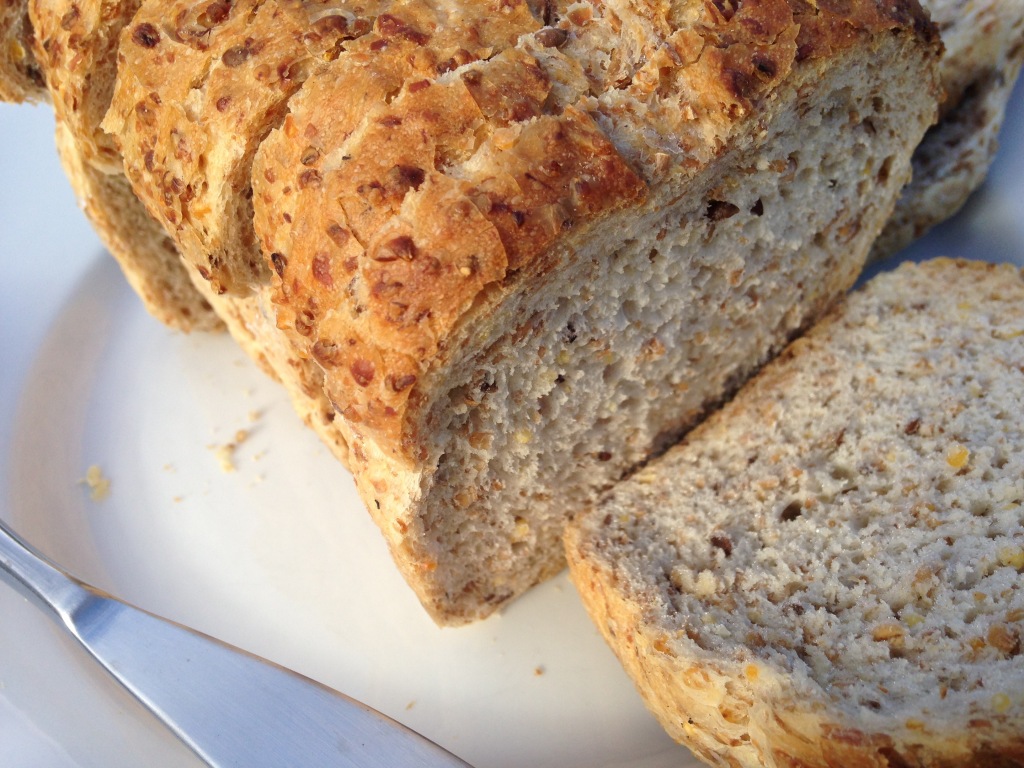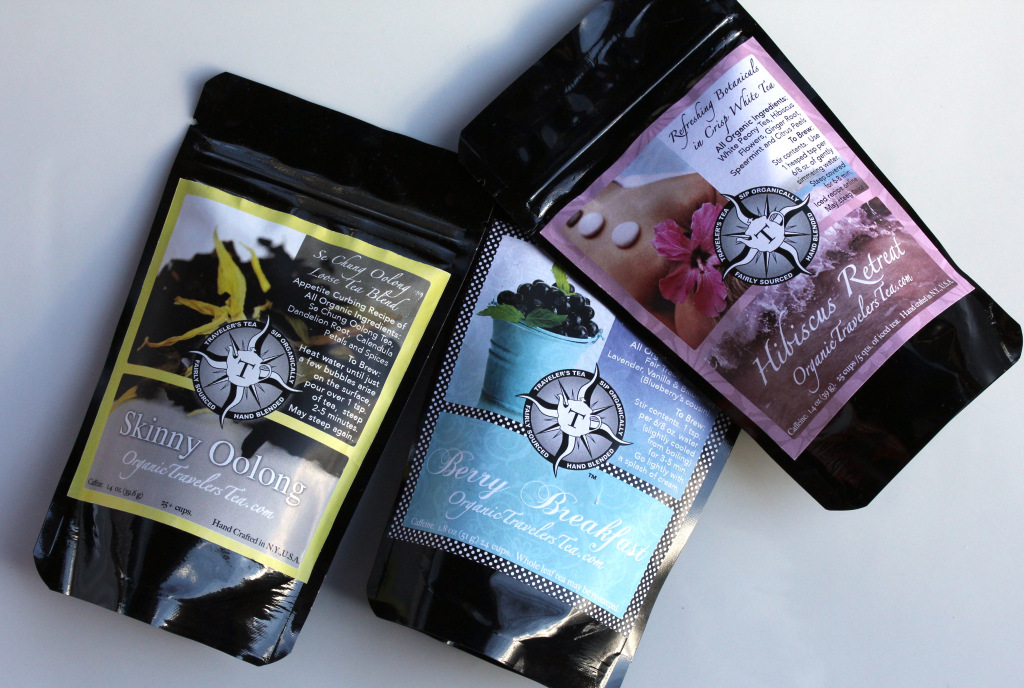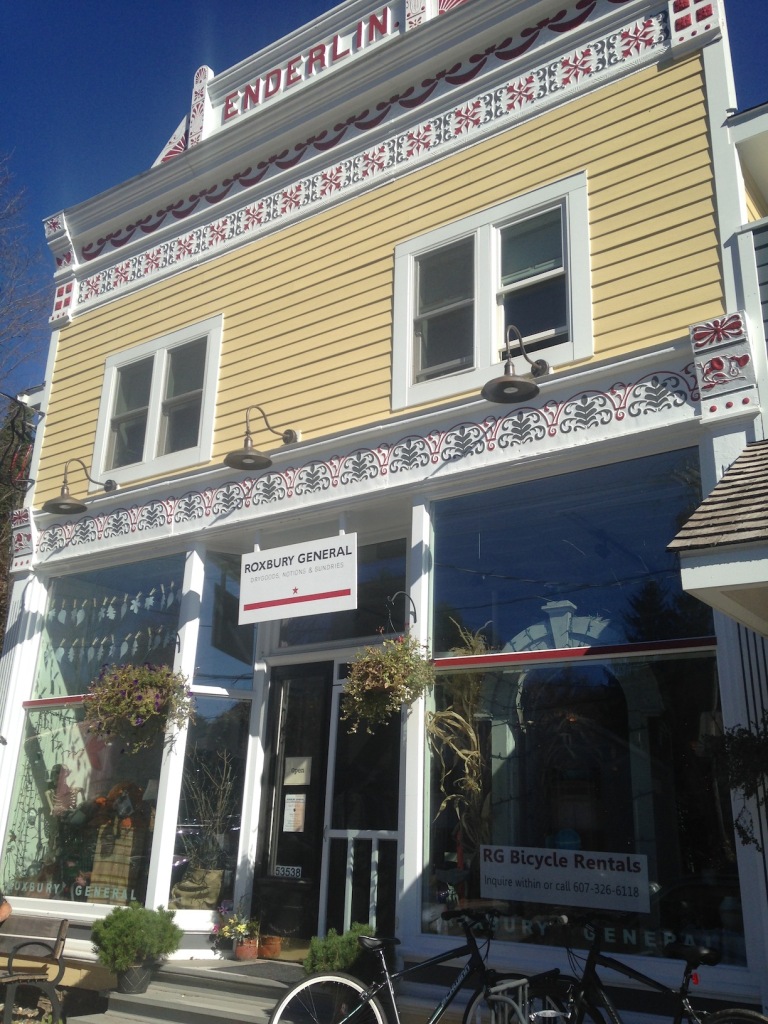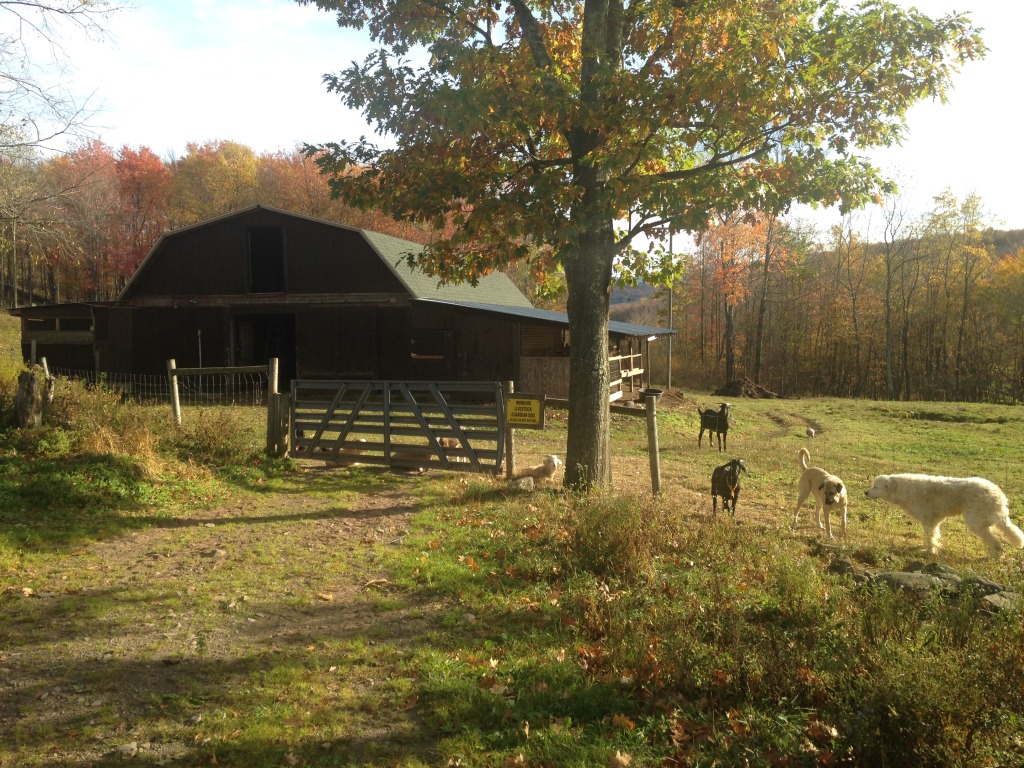Bread Alone’s cucumber, apple, celeraic, sprouts, arugula pesto comes on organic ciabatta bread, but is much better on wheat. Crunchy, chewy and refreshing all at the same time, if that’s possible: a delicious Catskills sandwich.
Tag Archives: Organic produce
A Local Guide to Catskills Products: Local Sugar
We published a piece about local sugar that you’ll find here in September 2014. Below is a more comprehensive list of the Catskills maple syrup producers. Tree tapping began much earlier this year, with tapping beginning in the southern Catskills as far back as Christmas. New York State’s Maple Weekend takes place on March 19th and 20th, and again on April 2nd and 3rd, 2016. There’s no reason not to get local sugar. At last count, for every dollar spent locally, the community benefits to the value of five to seven times that dollar, and all that money stays in the community. If you spend $20 on a bottle of maple sugar, it is the equivalent of putting $140 back into your community.
Maple syrup also has many health benefits:
A Local Guide to Catskills Products
The New York Times recently published a “guide to Delaware County’s thriving craft culture” and although a few of our friends and neighbours were included, a significant portion of our wares was omitted. Here in Delaware County and in the wider area of the Catskills, you can’t throw a stone without hitting a local producer of the highest quality. We have a vast array of everything artisanal, handmade and locally produced. The Catskill Mountains are home to a huge community of entrepreneurs, craftspeople and artists but the aforementioned article only included ten local purveyors. This post is the first part of a guide to all things made in the Catskills.
Catskills Conversations: Raji Nevin
JN: How long have you lived in the Catskills?
RN: Lived in Woodstock for about four and a half years now.
Where did you move from?
I just moved across the river from Rhinebeck.
Did you grow up in Rhinebeck?
No, I grew up in Oklahoma, smack in the middle of the USA, but I have moved quite a bit. I’ve probably lived in about 28 states.
Halloween in the Catskills
Halloween is a treasured time at the end of summer, a time where we all get together after having been out of touch for so long, after a hectic high season in the tourist industry that sustains the Catskills. Take a ride up Route 28 and join us for these events during the forthcoming week. The Upstate Dispatch Halloween weekend will include the following:
UPDATE: An earlier version of this post included Friday night drinks at the Phoenicia Diner Lounge, but the Lounge has closed for the season. This will make the long wait for Spring even more arduous. It’s a good thing that Mike Cioffi, owner of the Phoenica Diner is working on a new bar after buying property in Woodstock. Meanwhile, we are working on a list of great bars in the vicinity of the Lounge in a new post. Watch this space for a link to the list of places to drink on Friday night. Of course, there is also our beloved Peekamoose as detailed below. Friday night drinks at Peekamoose Tap Room are everyone’s favorite way to decompress after a hard week. The bar and restaurant is further up past Phoenicia by about ten minutes on Route 28 in the town of Big Indian.
Catskills Conversations: Peg DiBenedetto
JN: How long have you lived in the Catskills?
PD: I was born in Margaretville, so I’m a lifelong resident except for five years that Michael and I – the year after I got married, I was very young – we moved to Texas. We lived there for five years so we could finish school for basically free. Then came back and started raising our family here in the Catskills. So we moved back to my Dad’s farm and he gave a piece of it to each sibling.
Nice.
So my children grew up climbing on the same stone walls that I grew up climbing on and also my grandchildren are [doing that] as well. My brother and I used to bring the cows from the barn down the road up here to this field and then take them back again at the end of the day to be milked.
Chasing Honey Farms: Harvest Update
Last week, I spent a morning on Chasing Honey Farms in Fleischmanns watching Chase Kruppo harvest honeycomb from his three hives. I had to beat a hasty retreat after the bees became agitated and it turns out I was correct to turn on my heel when I did. Shortly after my departure, some of the bees swarmed and stung a fellow observer, but I’m told the chap took it like a champ.
The Year of the Apple: Catskills 2015
2015 must be The Year of the Apple in the Catskills such is their abundance this year. a neighbour guesses that we have heritage apples on our property. Yesterday, I borrowed a dehydrator in exchange for ten pounds of apples. It’s clear that I’ll be making apple products like apple sauce, fruit leather, dried apples and apple crisp, for days and days to come. The image above is my breakfast for the foreseeable future: plain yoghurt layered with homemade apple sauce.
Catskills Conversations: Louann Aleksander
Louann Aleksander sells herbs, which she grows from seed, wholesale and in The Annex in Andes.
How long have you lived in the Catskills?
It’s going to be eight years on August 1st.
So what made you decide to move here?
We had friends who had moved to Andes and before that my husband would come up maybe once a year and he absolutely loved it. We wanted to get out of the rat race of Long Island. It was getting where you work to go back to work. We weren’t enjoying life at all.
More Tea in the Catskills: Pu-Erh
A new favourite tea to add to the list of delicious tea available here in the Catskills: Coffee Lover’s Tea from Tay Tea in Andes. It took me a long time to realize that I was not suited to coffee after adopting it as a breakfast beverage when I first moved to New York City in my twenties. Back in England, I had been raised in a tea family and the familiar refrain: “put the kettle on” still rings in my ears because English people drink tea continually all day. The kettle is always on and whoever gets up first, from couch or desk, must boil the next batch of water. The nice thing about tea is that it doesn’t make you suffer like coffee does. I’ve never ever said the words: I’ve drunk too much tea. It just doesn’t happen, whereas I’ve had fraught conversations and business meetings wherein I’m pretty sure the most anxious people in the room have drunk far too much coffee. I may have the odd cup of coffee when I need a jolt of energy, but for the most part, I’ve returned to my first love, tea. Preparing a pot of tea is a peacefully meditative ritual, and sharing a pot of tea is like breaking bread. At Tay Tea this past weekend, I interviewed owner Nini Ordoubadi, tried a range of tea and some stellar tea-infused biscuits, but came away feeling invigorated and refreshed. And I now know much more about tea.
Pizza Night at Table on Ten
Two pals couldn’t have picked a more idyllic evening to attend Table on Ten’s pizza night: an early evening drive through the balmy, bucolic mountains of Roxbury so astonishingly beautiful in the waning light that we had to stop a couple of times to get out of the car and drink in the atmosphere. (“What’s that? Sheep. Let’s stop. Hey Ewe!”) Hay, barns, lush undulating ridges, rail trails, stone walls and bridges over roaring creeks: a gasp of admiration at every turn. A quick jaunt past the restaurant into the hamlet of Bloomville, New York, revealed a picturesque rural scene of tractors, antiques and a white-sided two hundred year old church atop a meadow.
Date Night: Peekamoose
After we closed on our mountain homestead (“sign here, here and here, here, here and here and sign here, here and here… initial here, here and here…”) we wondered aloud where we should go to celebrate and without a moment’s hesitation, our realtor swung away from her conversation with our lawyer to respond: Peekamoose. That was eight years ago and there really wasn’t anything like it then and there really isn’t anything like it now. When we first went to Peekamoose I wanted to just hand the keys back to the bank and move in. The country farmhouse atmosphere is so cozy and relaxing and the food is phenomenal, end of story. The chef’s freshly made doughnuts feel like they could fly away if you don’t hold them down with a generous dollop of whipped cream. I could go on, and I will.
Weekend Links: 06/13/15
Good news for Farm-to-Table in New York City. Lucky Dog in Hamden receives $40,000 in grant funding for its efforts. The link details some of the NYC restaurants that receive local produce. View the news release from the Delaware County Economic Development, a video by VeccVideography.
Farmers Almanac explains all those seed copters that are flying around this week.
Ever come to the country, been woken up by birdsong and wondered who was singing to you? Browse for birds by name and listen to their call from The Cornell Lab for Ornithology.
Travel the Milky Way on June 21st when Catskills Creameries open up their gates to the public.
The Farmers’ Museum in Cooperstown is due a visit.
Outdoor cinema in the Catskills looking for funding.
Hiker’s Tea: Trekker’s Reprieve
Regular readers already know about my love of tea and my obsession with Earl in Paris from Organic Traveler’s Tea, which makes a delicious cold brew that I take on the road. Yes, I travel with the Traveler’s, which is an organic tea that’s blended and sold locally. Now that the weather’s good for hiking, I’ve found tea that’s perfect to take up a mountain: Trekker’s Reprieve. You can cold brew it or take bags up a mountain and make sun tea with it while you eat your lunch. It’s gunpowder green with orange peel, spearmint, cinnamon and blue vervain. Blue vervain is a native plant from the mint family that grows all over the American prairies, meadows and plains and allegedly revered as a herb of great healing powers by the ancient Greeks. According to the USDA, it’s used internally to treat depression, fevers, coughs, cramps, jaundice, and headaches. So it’s healing for the hiker, tasty and refreshing. The citrus element serves to repel insects although nothing will stop the flies from dive-bombing your eyeballs.
Farm to Belly: Asparagus & Sheep Sorrel
Straight out of the ground and into the belly: a powerful organic, raw, vegan lunch and you don’t even need a plate much less a table. The tomatoes may have been endangered by last night’s frost, but the sheep sorrel which grows in the asparagus bed is a hardy little plant. Sheep sorrel is an edible weed that has the texture of spinach with the tasty tang of lemon, which makes it perfect for soups. It wilts quickly once picked, so it’s best just to eat it raw with some juicy asparagus. Sheep sorrel has an arrowhead leaf and grows in a rosette formation.
Spring Shoots Update
Green shoots are emerging from the raspberry sticks; the beetroot is flourishing; the cauliflower is shooting; the asparagus is prolific, as is the rhubarb; the hops are hopping, but the spuds and blackberries have yet to emerge. The dog is already too hot and has dug a mud hole under some equipment. His home for the summer.
Asparagus Update
On May 1st, we planted a long bed of twenty new asparagus and in less than ten days we already had a six-inch tall shoot from one of the mounds (bottom middle of the picture). All the other roots planted have shoots of about an inch. The image of the “tall poppy” below was taken yesterday morning.
Catskills Conversations: Peter DiSclafani
Peter DiSclafani is proprietor and chef of the Catskill Rose Lodging and Dining in Mount Tremper, New York with his wife Rose Marie Dorn.
How long have you lived in the Catskills?
Rose and I moved here in 1987 after we got married. I was born and raised in Saugerties. I was out in Colorado in the seventies after high school just to check things out and that’s where I met Rose. She’s from Colorado.
Spuds
Back in England, I have a friend who has a spud bucket, a large metal rubbish bin filled with soil, into which she thrusts a needy hand and miraculously pulls out a spud or two for dinner. She keeps it in the backyard and, needless to say, does not need to buy spuds, ever. Potatoes need well-drained, loose soil, but lots of rain, so they are perfect for high elevations here in the Catskills. To have your own potato bucket simply:
1. Drill three or four holes in the bottom of a bucket, about half the size of a garbage pail;
2. Line the bottom of the bucket with a three-inch layer of rocks for drainage;
3. Add a six-inch layer of peat and compost on top of the rocks;
4. Throw in four seed potatoes;
5. Cover with a two-inch layer of peat/potting soil mix and pat down.
Asparagus
Asparagus is going in at Upstate Dispatch HQ. A perennial, it takes a few years to get started with a low initial yield, but it’s a low maintenance crop that’s ideal for the novice gardener. Not only is it delicious, highly nutritious and otherwise quite expensive, it freezes well so you can eat it year-round. Let the asparagus grow to long ferns in the first year and the whole plant can last 20 years. Today, two beds (6-12 inches deep and 6 inches wide) were dug and a 2-3 inch layer of wet compost and peat mixed together was added. 10 asparagus roots went in each bed, 18 inches to 2 feet apart from each other. Soak the asparagus roots for a half hour before you plant. Spread the roots out like a flattened spider, lay crown-up, and cover with a 2-3 inch layer of dirt. Don’t fill in the trench with dirt until the shoots make it through their individual dirt pile. Keep adding dirt as the shoots grow over the forthcoming weeks. The weeds you see growing in the middle of the trenches are last year’s over-wintered parsnips. They were pulled.
Sunday Punk and More Tea
To continue the British punk theme for the remainder of the weekend and into Monday. The DIY ethos of the punk movement merged with my British obsession with tea, (made from Organic Traveler’s Tea) ready for The Economy of Punk on WIOX FM Radio tomorrow morning at 9am. Making my own cold tea while choosing content for the show.
The Sugar Shack: Tapping Season
The maples have been tapped and the sap is boiling, old-school style, at the Hubbell Sugar Shack and will be boiling for the next month. This sugar shack runs on a wood-burning furnace and the product, Liquid Gold is sold at Catskill Rentals and Sandford Auto Parts.
The Hubbell Cider Press
The Hubbell Cider Press dates back to the 1880s. The mountain railroad allowed farmers of the Catskills access to heavy machinery left over from the civil war. Chopped apples come down the chute, top left and land in the barrel, bottom left. The mush is then pressed flat between racks on the press in the background. Juice is collected in trays beneath the press running down the centre.
A Cuppa Love
Just in time for Valentine’s Day, a lovely brew from Organic Traveler’s Tea: rooibos (red African herbs), honeybush, roses, fair trade vanilla, hibiscus, ginger, cardamom and vegan chocolate from Girl & Bee. Earthy and warm, delicately subtly spicy.
Daily Catskills: 01/11/15
The Phoenicia Diner Challenge
Last year, Mike Cioffi, owner of The Phoenicia Diner, and I ruminated on the costs of running a restaurant on my radio show The Economy of the Kitchen. Next week, Monday 12th January at 9am, in our second and final show, The Economy of the Diner, we’ll discuss the diner as American icon. The diner also has a rich cinematic history: Pulp Fiction, Twin Peaks, Superman, Back To The Future, Heat, Thelma & Louise, Diner: the list goes on and on. Who can forget Jack Nicholson trying to get an order of wheat toast in Five Easy Pieces or the tipping scene in Reservoir Dogs? Not to mention Meg Ryan’s glorious turn in Katz’s Deli in When Harry Met Sally and the actual movie called Diner, starring Steven Guttenberg directed by Barry Levinson.
As a foreigner, the diner is the ultimate American experience and my first diner visit was Relish in Williamsburg, sadly now slated for demolition. I’ll never forget my first order of biscuits, sausage and gravy and with whom I shared it.
My new challenge is eating my way through the menu at The Phoenicia Diner and I continued today through the skillet section. I tried the Duck & Grits skillet ($11), House Cured Corned Beef Hash skillet ($11) and the Arnold Bennett Skillet ($10). My first taste of American grits (not a British staple) was back in Brooklyn and had been quite vile experience, like eating cold porridge. PD’s grits are creamy with a hint of cheese; their scrambled eggs are the perfect combination of moist and firm. If Chef Mel uses salt in the dishes, you can’t really taste it and this is how it should be. Salt should be the choice of the customer. The Arnold Bennett Skillet ($10) came out on top in this round: locally smoked trout (delicately tasty), parmesan cheese, crème fraîche and scrambled eggs. PD makes its own bread too, which is thick, slightly chewy and tasty. Portions are generous and the eggs are noteworthy – some of the best I’ve eaten in the Catskills – for their vivid orange color. Most ingredients are sourced locally and when they run out, so does the item on the menu for the day. Eat here before you ski, on your way to Belleayre for the hearty nourishment that lasts all day. You can take sides and leftovers to go in compostable containers.
Tune in to The Economy of the Diner on WIOX at 9am on Monday January 12th, 2015.
Saturday Shopping: Local Honey
Honey: a form of address, miracle food, medicinal unguent and mysterious immortal time traveler, having been found in Egyptian tombs intact, it has survived thousands of years. If only those crusty, aged urns of the amber nectar could speak, they could convey untold stories. What honey’s secret to eternal freshness? Lack of moisture, according to the Smithsonian Magazine and a combination of the following factors that produce a rare quality.
First, the aforementioned low moisture content can be survived by only very few bacteria who technically suffocate in the honey. “They just die,” writes Natasha Gelling, quoting Amina Harris, executive director of the Honey and Pollination Center at the Robert Mondavi Institute at University of California. Honey is a sugar and it’s hygroscopic, meaning that it contains very little water in its natural state, but “can readily suck in moisture” if left in an open container.
Second, honey is very acidic with a pH value between 3 and 4.5. “The acid kills whatever wants to grow there,” states Harris. Next:
“Bees are magical,” Harris jokes. But there is certainly a special alchemy that goes into honey. Nectar, the first material collected by bees to make honey, is naturally very high in water–anywhere from 60-80 percent, by Harris’ estimate. But through the process of making honey, the bees play a large part in removing much of this moisture by flapping their wings to literally dry out the nectar. On top of behavior, the chemical makeup of a bee’s stomach also plays a large part in honey’s resilience. Bees have an enzyme in their stomachs called glucose oxidase (PDF). When the bees regurgitate the nectar from their mouths into the combs to make honey, this enzyme mixes with the nectar, breaking it down into two by-products: gluconic acid and hydrogen peroxide. “Then,” Harris explains, “hydrogen peroxide is the next thing that goes into work against all these other bad things that could possibly grow.”
So, with honey being thick enough to put on wounds and containing just enough hydrogen peroxide, it’s the perfect healing unguent. Store your honey in a sealed, airless jar and it will never spoil.
Manuka honey, which is made in New Zealand from the nectar of Leptospermum scoparium, is the basis of Medihoney, which the FDA approved in 2007 for use in treating wounds and skin ulcers.
You may not be surprised about colony collapse disorder if you’re familiar with the large-scale, commercial beekeeping industry. Rather like industrial agriculture in its approach, facilities keep millions of bees in expansive fields that look, ironically, like military graveyards. Commercial “migrant” beekeeping outfits also rent bees out to large-scale agriculture, transporting hundreds of hives on enormous trucks with the bees in them and that’s before you add in pesticides and GM crops. It must be confusing and highly stressful to be a commercial bee.
There’s more urgency than ever to support locally-produced, small-batch honey. The Phoenica Honey Company, based in Phoenicia, New York, buys raw honey wholesale from apiaries in Ulster County and infuses it with natural additives like cinnamon, lavender, star anise, ETC. Proprietor Elissa Jane Mastel buys organic additives where she can and never heats the honey to above 112F and has plans for a thyme and pecan infused honey. The resultant infusions are light, delicate and perfect with tea. Phoenicia Diner and Mama’s Boy Coffee in Phoenicia and Bumble & Hive in Rhinebeck serve Phoenicia Honey Company’s honey.
At Griffins Corners in Fleischmanns, Chase Kruppo is developing Chasing Honey Farm, a new honey haven, on a family plot of five acres. It’s a new long-term sustainable agricultural venture wherein members can “buy-in” on a beehive and either, receive the honey from their bees, the proceeds from the sale of their honey at market, or a combination of both. Chase’s mission is “to create jobs, craft superior honey, and aid a declining bee population”. Watch a video presentation of Chasing Honey Farm here.
“Honeybees pollinate one third of grocery produce and it is vital to the Upstate region to secure the food it produces by supporting its pollinators,” says Chase. “46% of bee hives reporting in New York State were lost last winter due mainly to starvation and excess moisture. Part of the 2015 expansion project of Chasing Honey Farm is the creation of an apple orchard, vineyard, and plantings of white currants, lavender, and mints. Creating summer-blooming food sources for honeybees help the hives build up honey reserves for winter.”
No honey can be certified organic because bees can roam up to five miles away from the hive in every direction, but if we all planted bee-friendly, pesticide-free vegetation, it would help keep local bees healthy.
Local, Antique & Vintage Holiday Gift Guide 2014
Go to Blue Barn Antiques, in Shandaken/Phoenicia for some excellent bargains on high-quality antiques like this Rockwell-painted plate (above) for $15. There is still a pile left with different Rockwell paintings. Other utterly gorgeous vintage and antique dresses are still there alongside modern artisanal products like Pillowtique’s pillows and handmade crafts.
First Person Dispatch: Phoenicia Diner
No words can possibly describe the Wild Hive Skillet Polenta with Eggs and sauteed greens. The menu offered “sunny side up”, but the server offered them whichever way I fancied, so I took them scrambled and they were cooked to perfection: lightly buttery and moist. Was there cheese in the Polenta? Who knows? There was something magical in there, whatever it was, that made me feel like going straight to the Blue Barn and spending $36 on an antique red silk dress from Shanghai. Last time I did that it was the biscuits and gravy from Diner in Williamsburg, and two dresses from Pima Boutique in the Girdle Factory on Bedford Avenue… circa 2001. Remarkable dining experiences that make me go shopping are as rare as rent-stabilized apartments.
Saturday Shopping: Winter Farmer’s Markets
Could there be anything more emblematic of the revolution in our consumption habits than seeing a branch of Bank of America transformed into a farmer’s market? Route 28, the essential thoroughfare that winds through the Catskills from Kingston’s Exit 19 on Route 87 (the main arterial route travelling north through New York State from New York City) to Delhi, now has a handful of winter farmer’s markets to visit after the fair-weather markets close on or just after Thanksgiving. Year-round farmer’s markets are rare, but if we frequent them, they will spring up to meet our demand.
Here’s a modest list from Upstate Dispatch that runs east to west starting with the Kingston and Rhinebeck markets and ending in Andes.
Should you know of any more, please reply to this post and I will add them.
Kingston Farmers’ Market, Old Dutch Church, 272 Wall Street, Kingston, NY 12401. 1st & 3rd Saturdays from December through April 2015.
Rhinebeck Farmers’ Market, Rhinebeck Town Hall at 80 East Market St, Rhinebeck, NY 12572. Alternate Sundays: Dec 7 & 21, Jan 4 & 18, Feb 1 & 15, March 1, 15 & 29, April 12 & 26
Greenheart Farm Market: the former Bank of America on 2808 Route 28 in Shokan, between the Door Jamb and the intersection of Route 28 and Shokan Road, is open 24 hours. Go here to see it as its former self on Google Maps. Call Al, on (845) 657-2195.
Migliorelli Farm, 5150 Route 28, Mt. Tremper, NY. Contact: MaryAnn Migliorelli Rosolen. Phone: (845) 688-2112.
Andes Indoor Farmer’s Market, 143 Main Street, Andes, NY 13731. Contact: Cheryl Terrace. Phone: (607) 832-4660. All year round Amy delivers frozen soups to farmers and homeowners. Amy is based at the Andes Indoor Farmers Market every Saturday.
On Route 28 in Delhi, you can pick up locally-grown produce from Maple Shade Farm.
Saturday Shopping: Chocolate
Girl and Bee sells chocolate truffles, chocolate bark and infused honey but it’s the chocolate bark that stands out for both its rough-hewn texture and exquisite organic embellishments which include goji berries, lavender, cacao nibs, bee pollen, peppermint and chamomile. Devastatingly delicious, the bark is a tactile experience, coming in palm-sized slabs and thin enough to permit a satisfying snap that releases a burst of color and aroma. It’s tasty and pretty: perfect for a holiday gifts. The bark comes in 4-ounce boxes for $8 and a 12-ounce tin for $20. If you’re in it for the truffles, they are each lovingly prepared by hand: thick, firm and intensely flavored by the likes of vanilla, rose and lavender. “Every truffle has had my hand on it,” says proprietor Melissa Zeligman who sells the 4-truffle sampler box for $14 and an 8-truffle sampler tin for $25. Gold leaf adorns the vanilla truffle like a little crown and combines a dark chocolate shell with pulverized Madagascar vanilla beans in the center.
Saturday Shopping: Bread
In the heart of the English word companionship you will find the word bread, such is the reverence given to this humble foodstuff. It’s from the old French compaignon, literally “one who breaks bread with another”. You’d never know this now of course because wheat has suffered a sharp, unfriendly rebuke of late. The staff of life has stuck in the mud, been rolled into the metaphorical fire and the problem is the now-infamous gluten.
Saturday Shopping: Lotions and Potions
The pharmaceutical industry is a trillion-dollar industry in which “simple lab work done during a few days in the hospital can cost more than a car” and patients are reportedly paying $37.50 for a tylenol according to recent investigative journalism like the Time piece by Steven Brill. Consumer expenditure on holistic and natural remedies pales in comparison. Moreover, the toiletries you find on typical supermarket shelves are loaded with preservatives and chemicals like phthalates, parabens and other hormone-mimics that disrupt the endocrine system. There’s much in the natural world that will clean and nourish us more safely and, in coming months, Upstate Dispatch will run a preparatory series on foraging and incorporating natural remedies into our cosmetics and diet. It’s possible to wash your hair and body with products that are entirely free of harmful chemicals purchased here in the Catskills. Today’s potions were Red Clover balm made by Moody’s Mountain Medica of Margaretville, found in The Roxbury General Store and soaps and balms by Green Spiral Herbs containing only natural and organic oils.
Side Note: Autumnal bliss and more tea…
Upstate Dispatch is waking up with the brilliant Berry Breakfast this overcast, surprisingly warm and humid morning (61F at 7.30am), in order to join the Halcottvsille Plein Air Group on top of a mountain in Roxbury for a watercolor session. Then it’s back to oils for the winter. We can’t get enough of this surperbly, delicately crafted tea.
The Roxbury General: Local Luxury
If you’re looking for a killer girls’ weekend of luxury shopping, stylish accommodation and the some of the most beautifully-crafted and generous cocktails in the Catskills, go to Roxbury. This weekend would have been the perfect weekend for it: brilliantly sunny, t-shirt warm, a performance by a group of fiddlers and a tasting of the divinely luscious Organic Traveller’s Tea at The Roxbury General Store, where you can also rent bikes.
The Fine Art of Cultivation: Two Stones Farm
“The goal of farming,” wrote Masanobu Fukuoka, farmer and author of One Straw Revolution, “is not the growing of crops, but the cultivation and perfection of human beings”.
The delicate words of this Japanese maestro echo all over the Catskill Mountains as young people, city-bred and country-born, return to farming in droves. Agricultural courses spring up like new shoots across the Northeastern states to respond to demand. Furthermore, there’s a flurry of articles regularly in the media about diverse people quitting New York City. Young, old, wealthy and those tired of the city’s rising cost of living are all looking to make upstate their home. Homesteading is an art in itself and the Catskills are bustling with creative activity. Small-scale farming, the kind that covers the property’s operating costs, doesn’t have to be an enormous amount of work and new busy upstaters with enough capital can now hire farmers and farmer’s apprentices to run their farms while they continue their existing businesses. City transplants who have made the leap quickly find that there’s an invigorating honesty in land cultivation that is rarely found in city life.
Novice homesteaders looking for an exquisitely picturesque organic farm on which to model their fledgling operation should look no further than Two Stones Farm in Halcott, New York.
